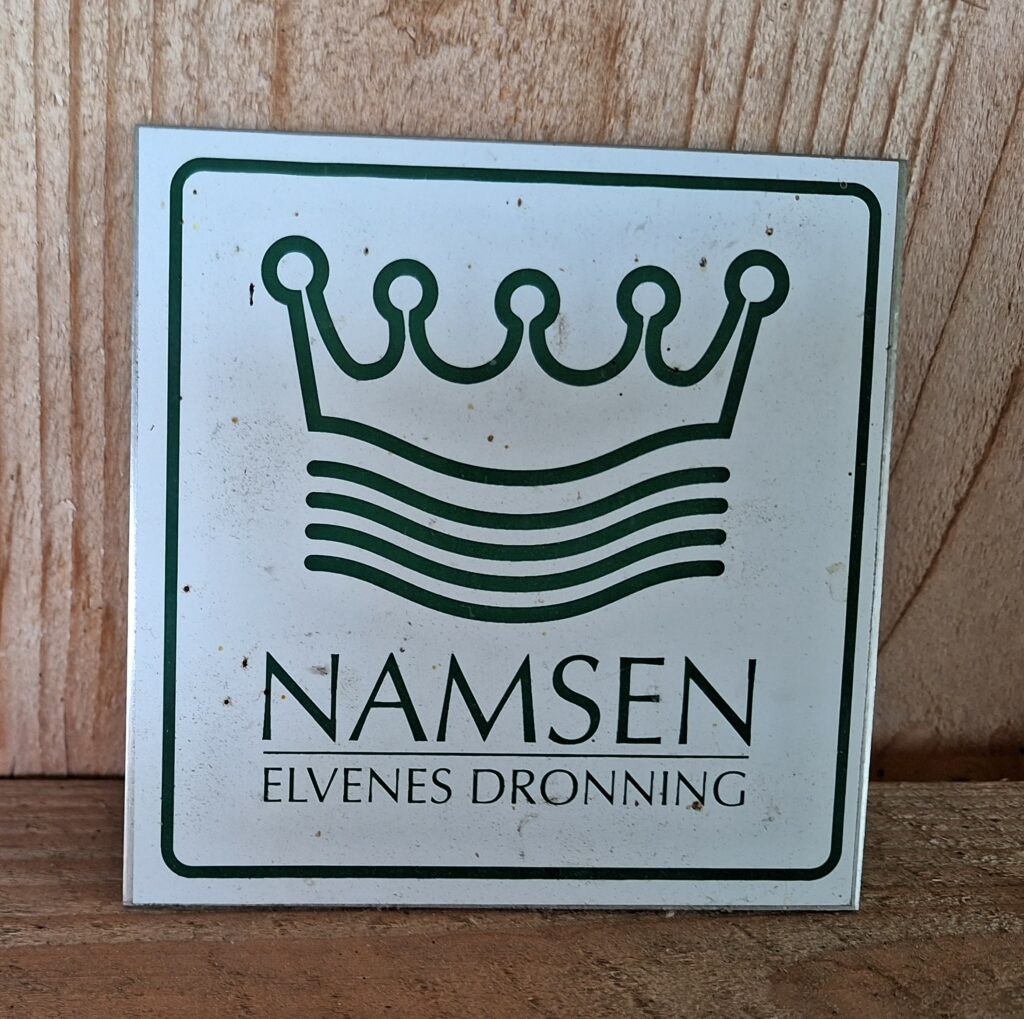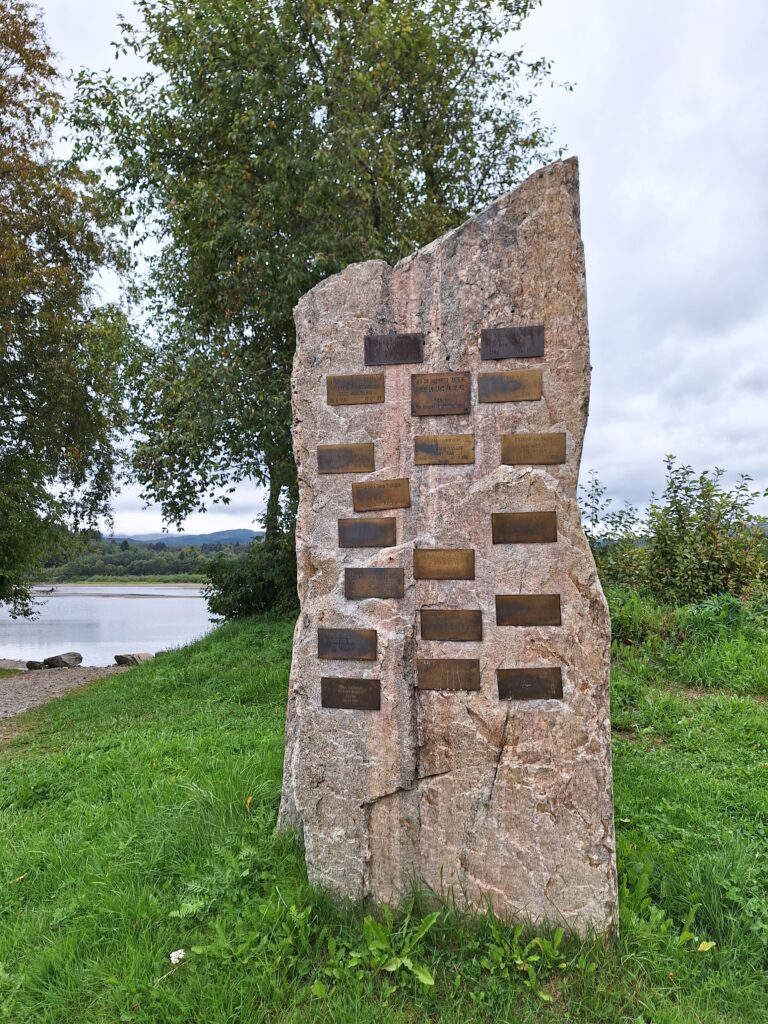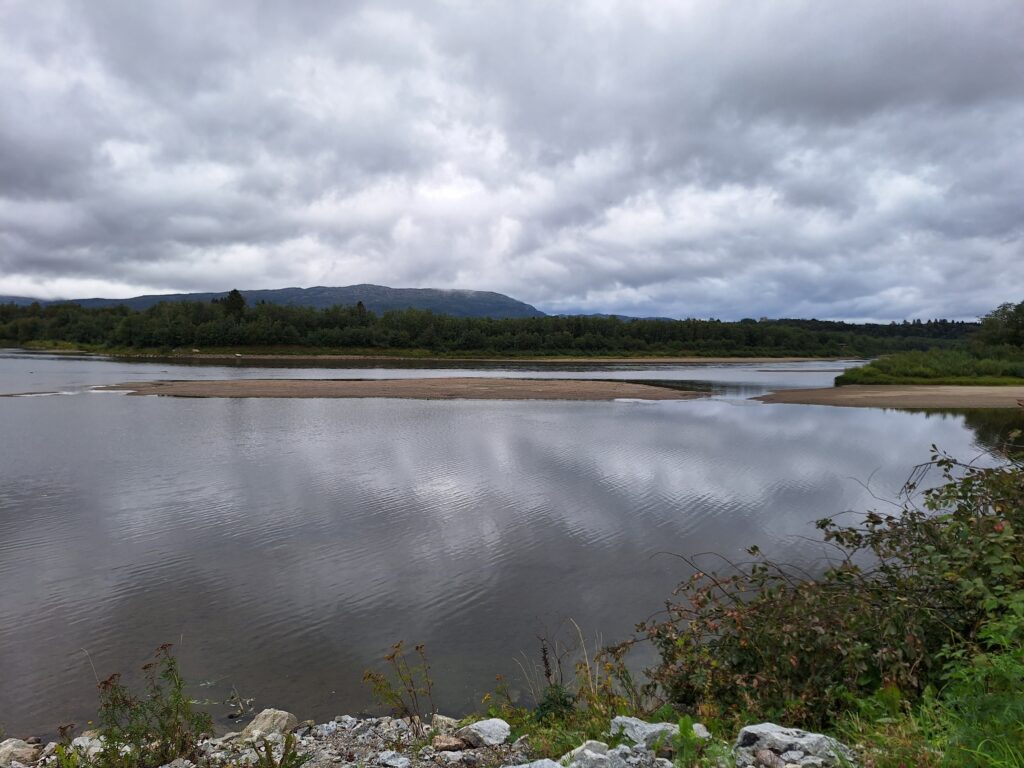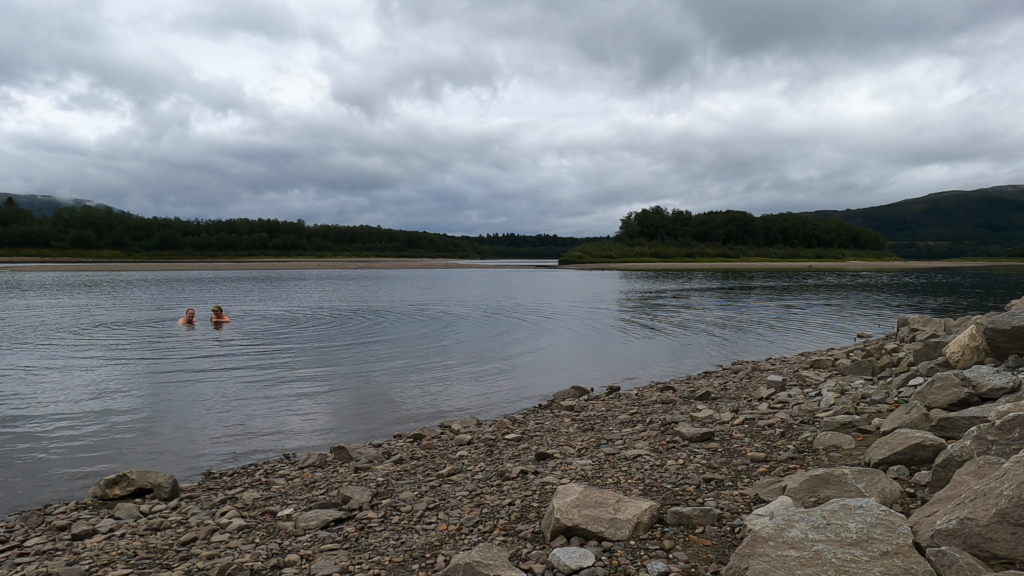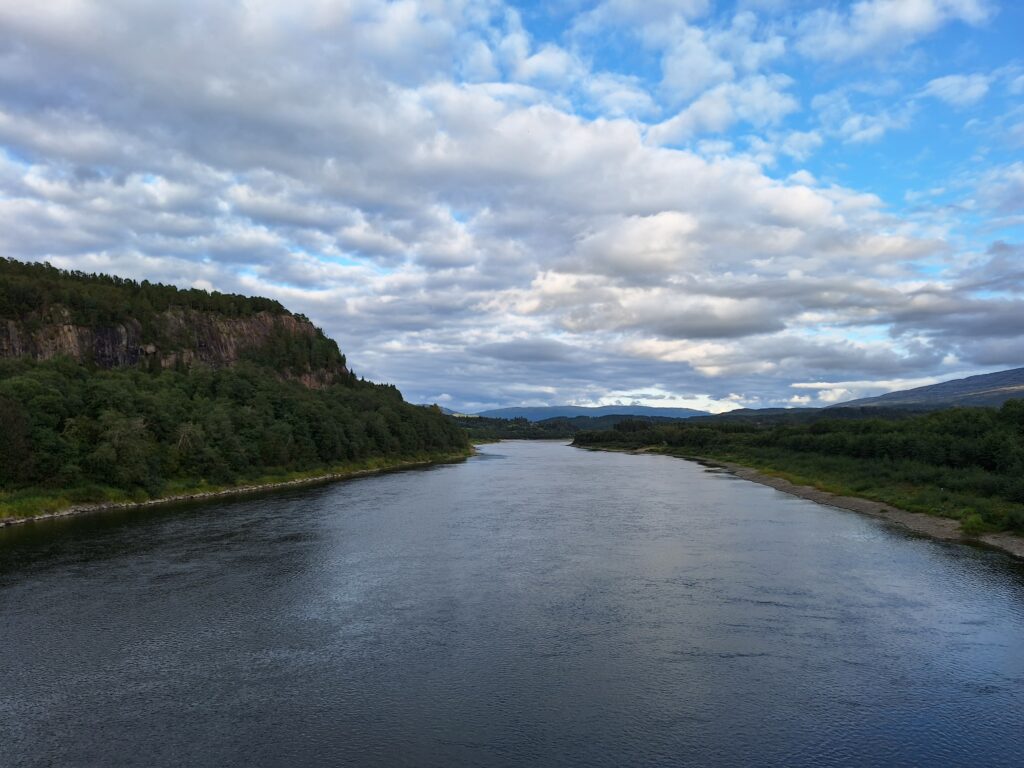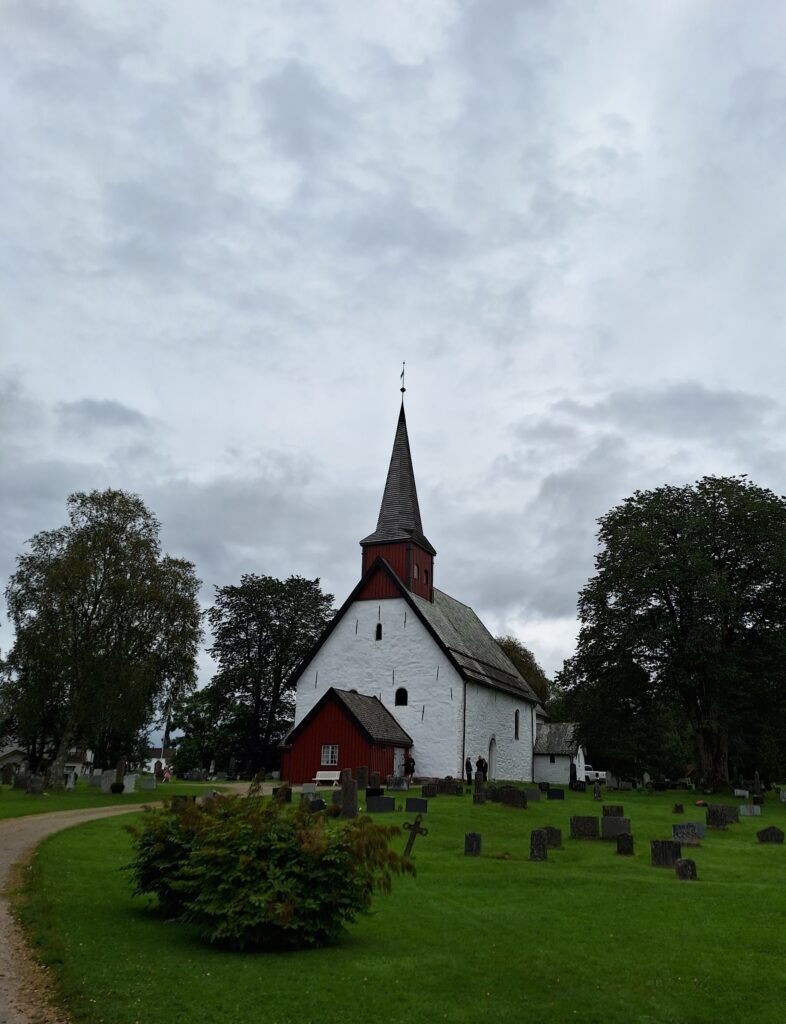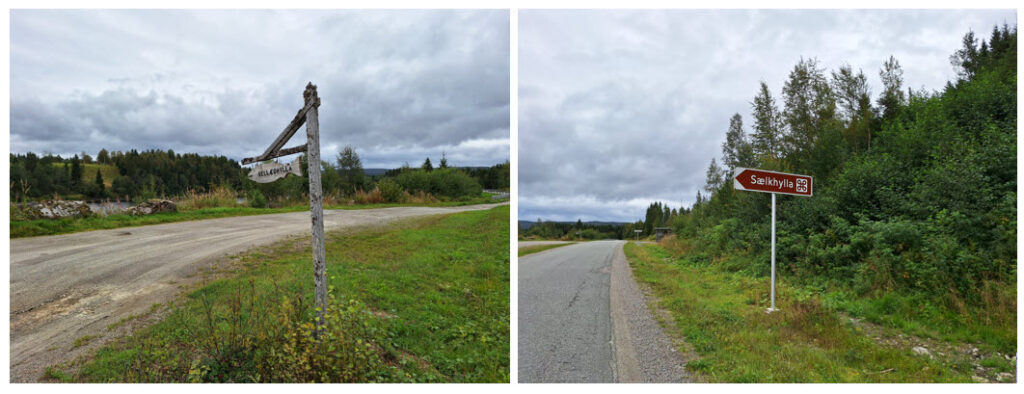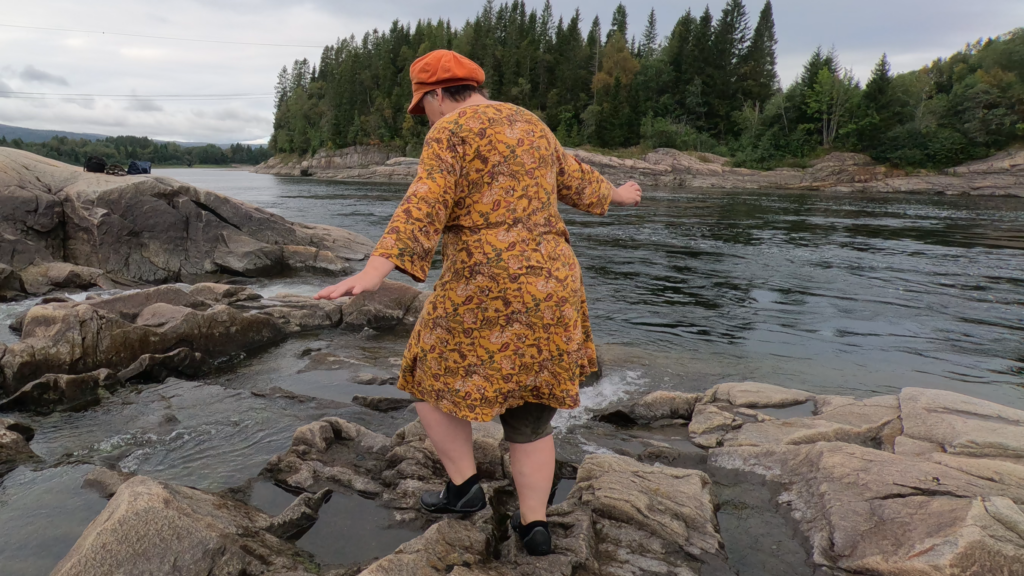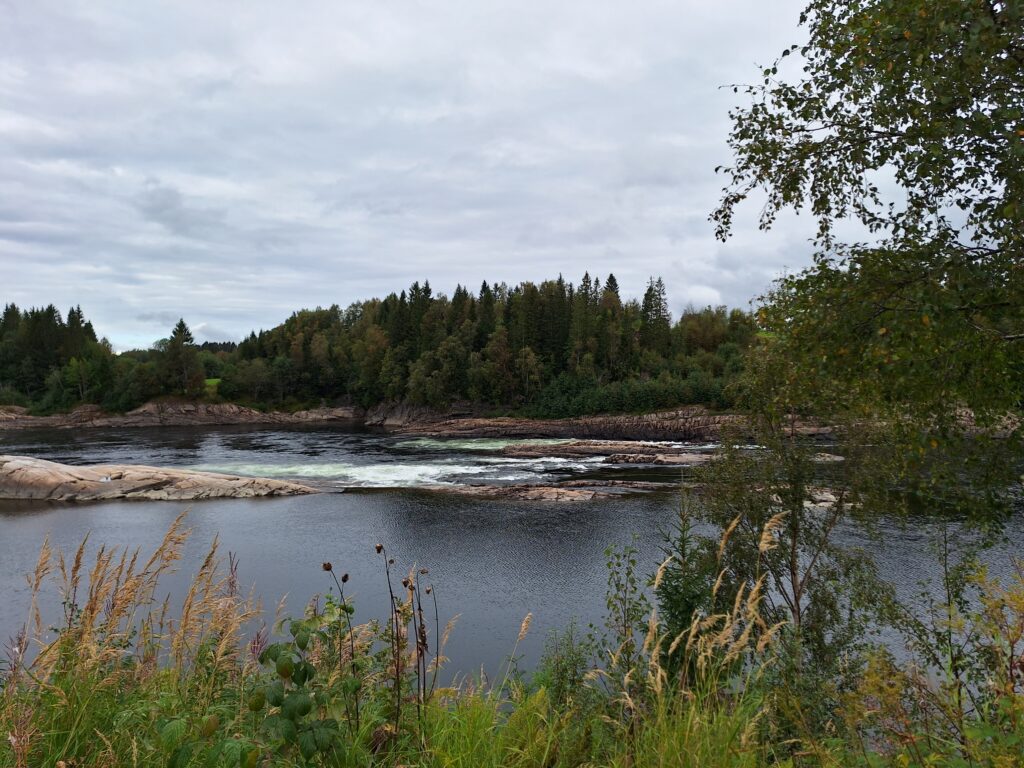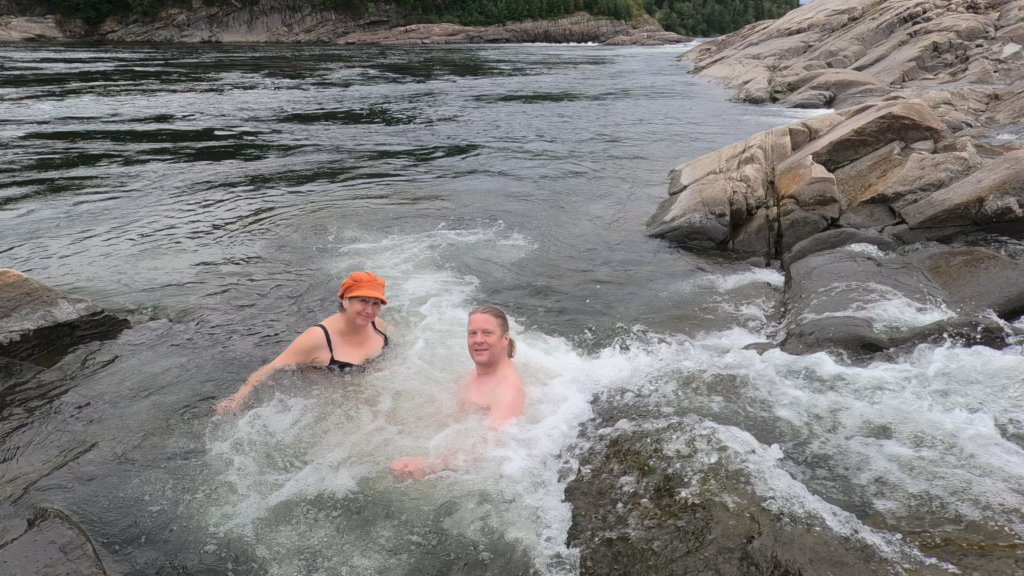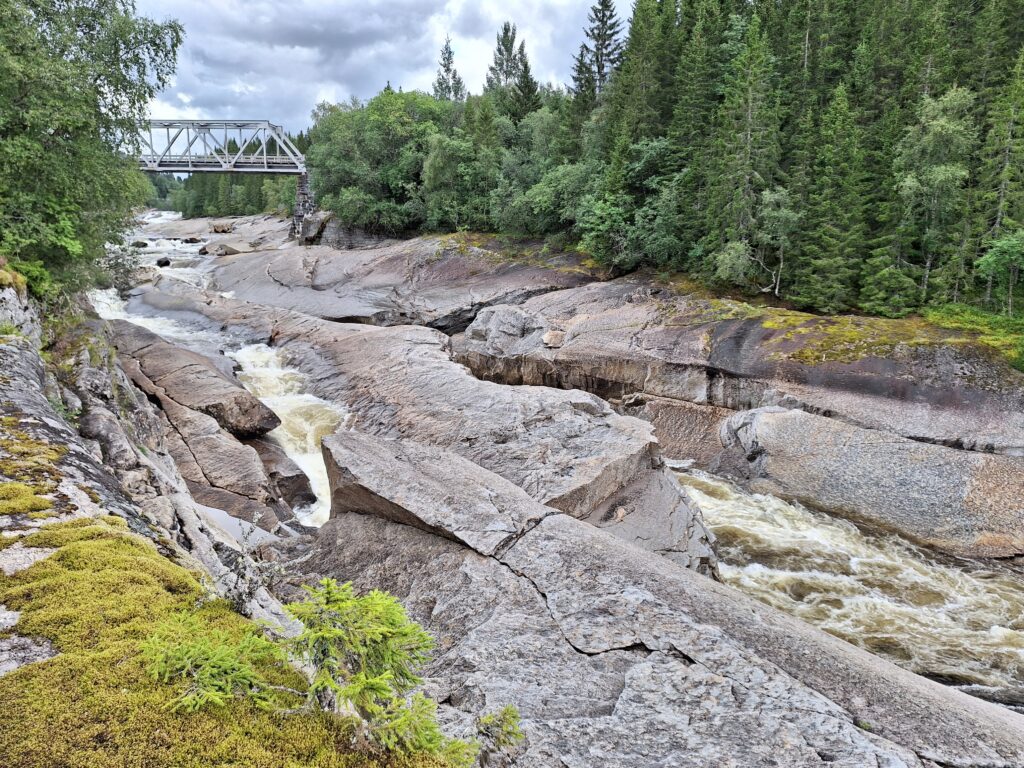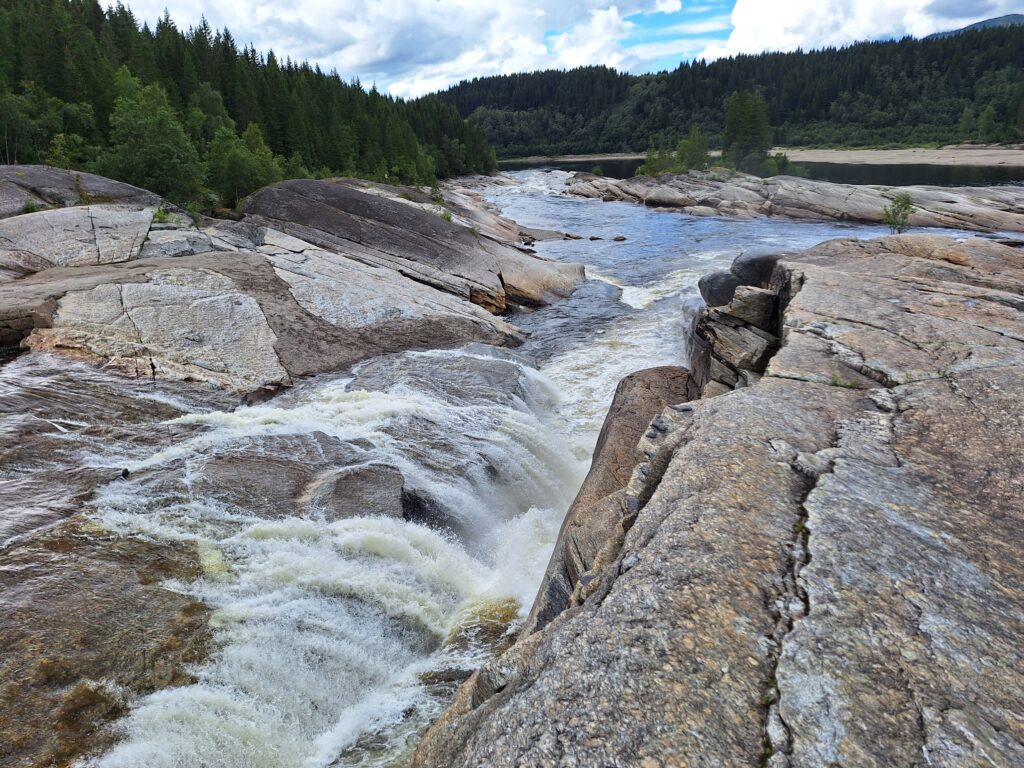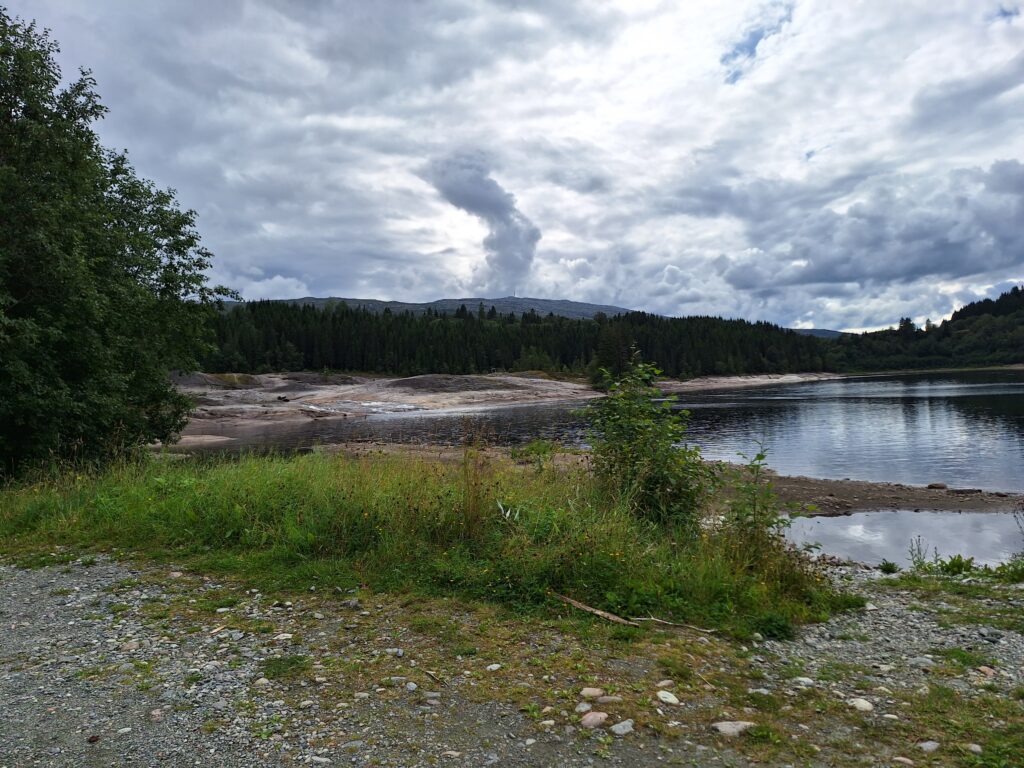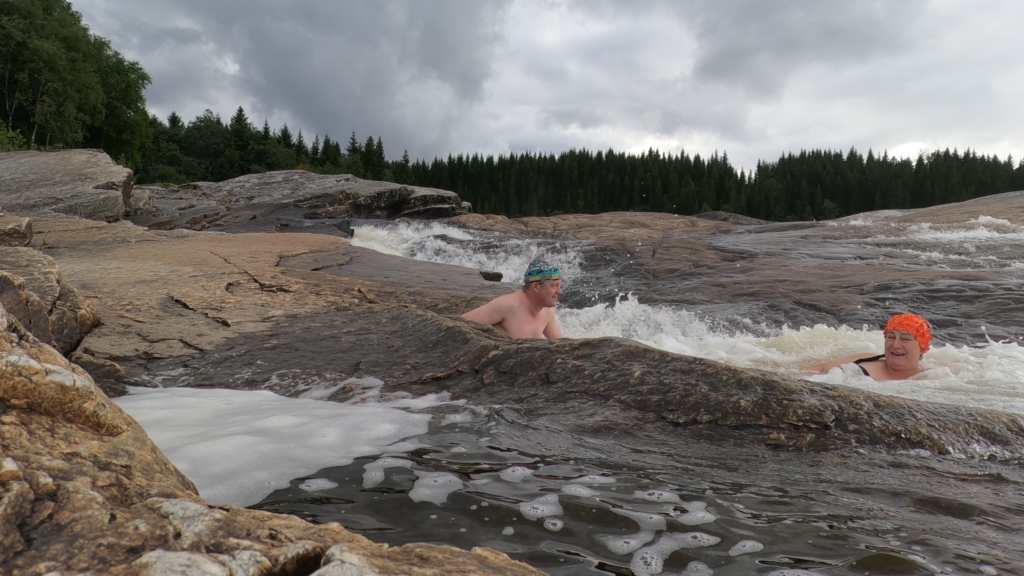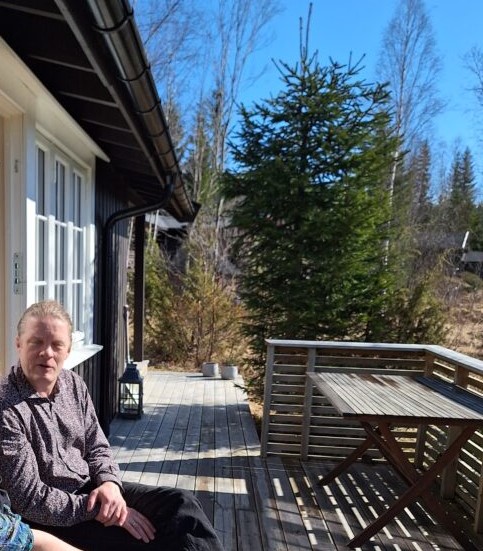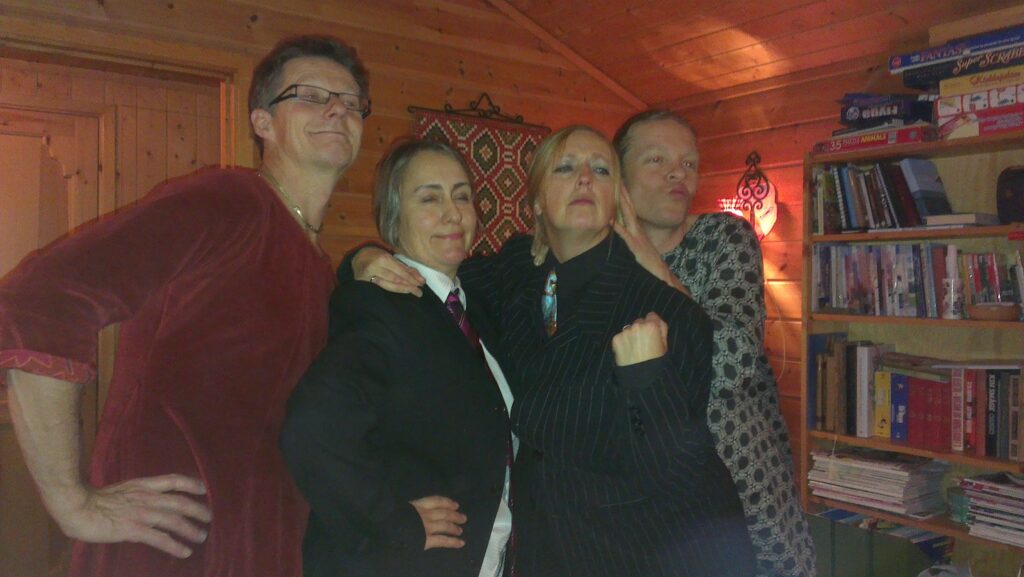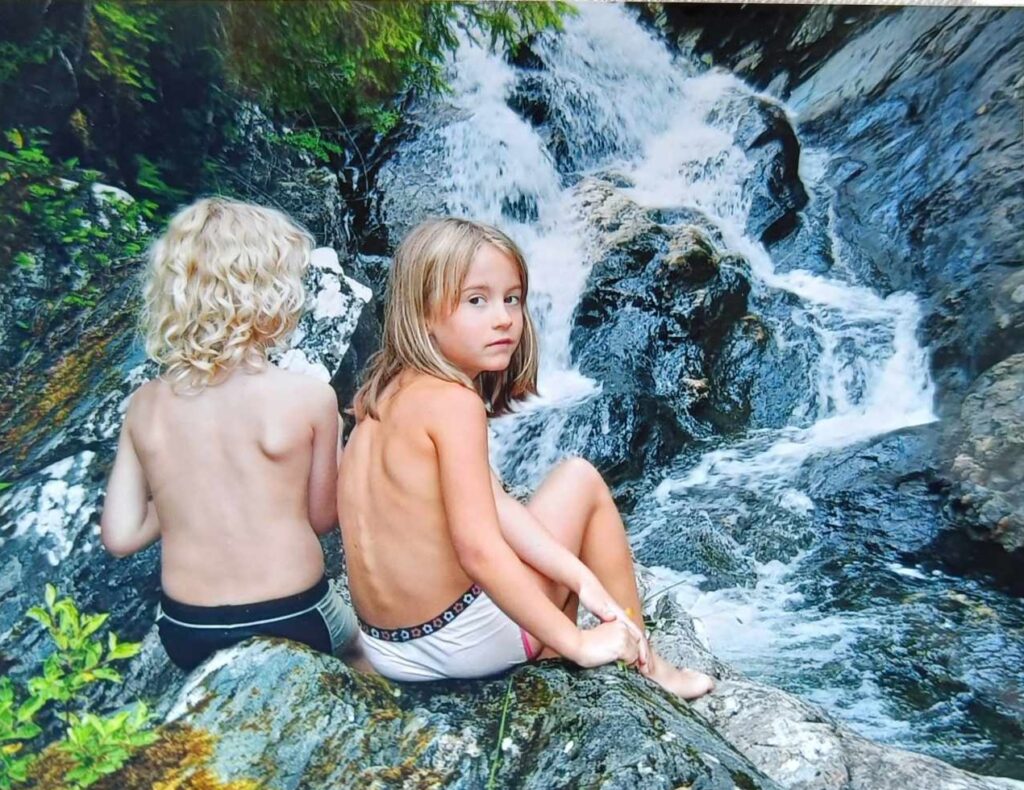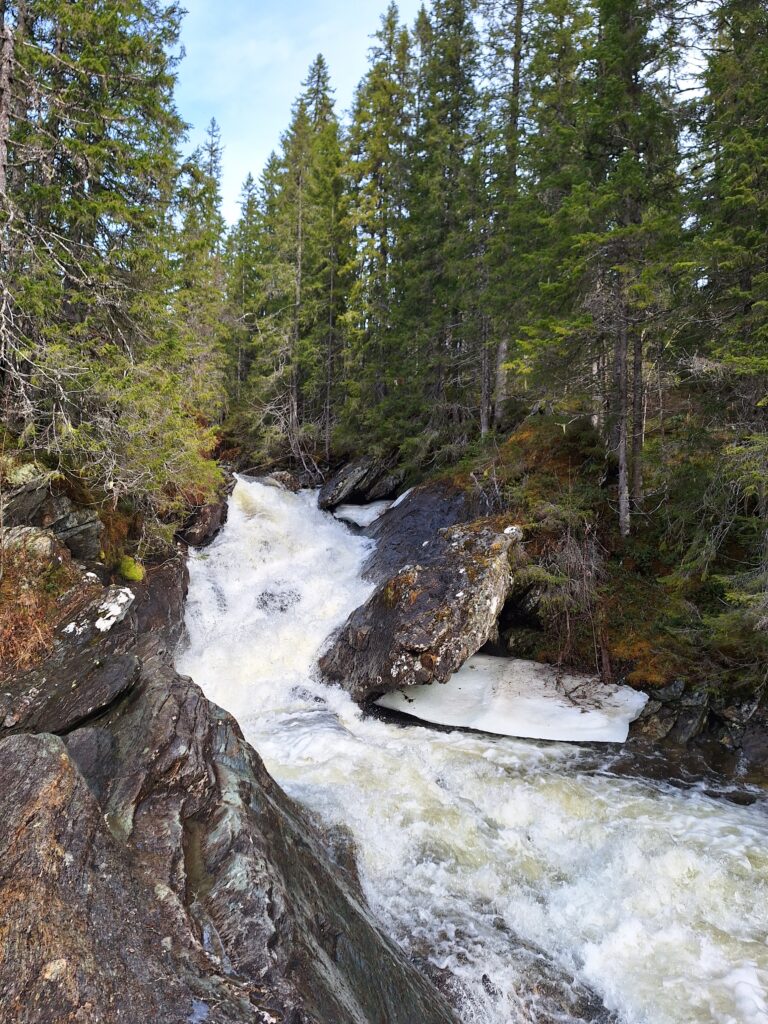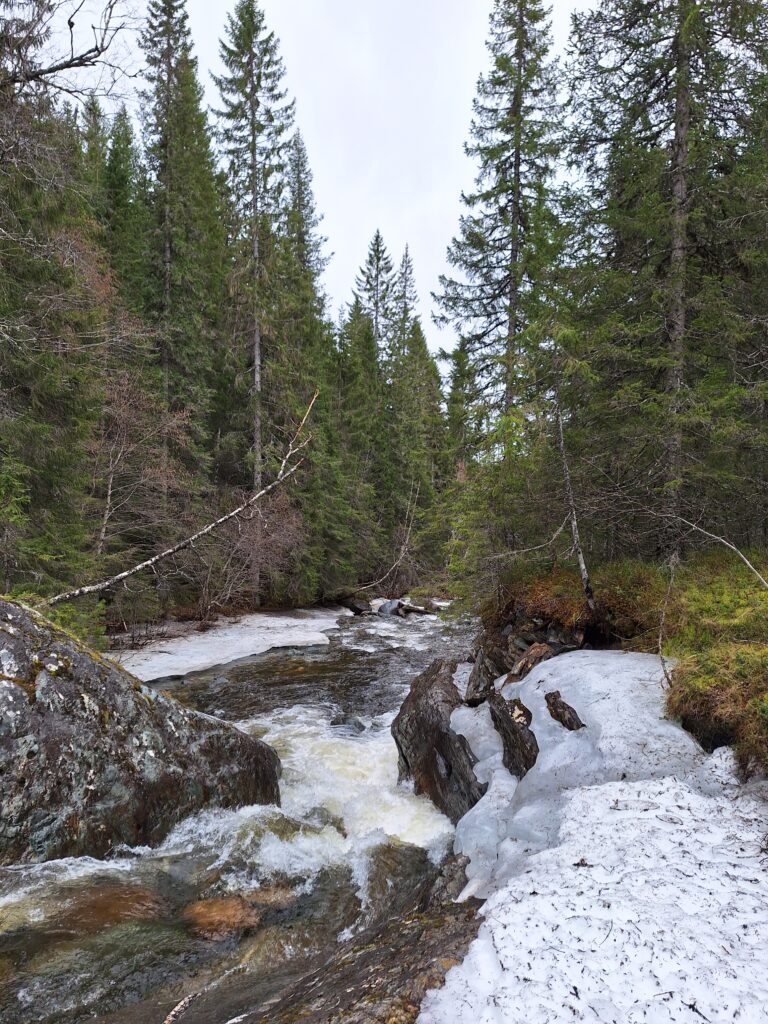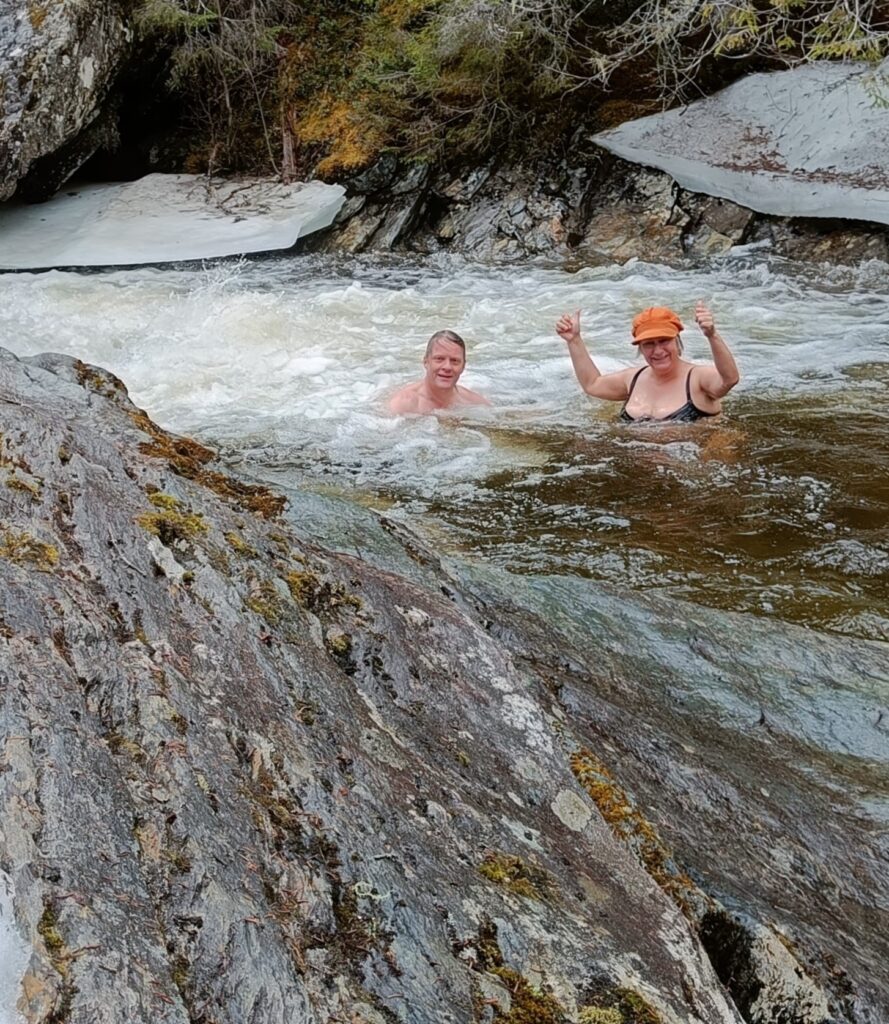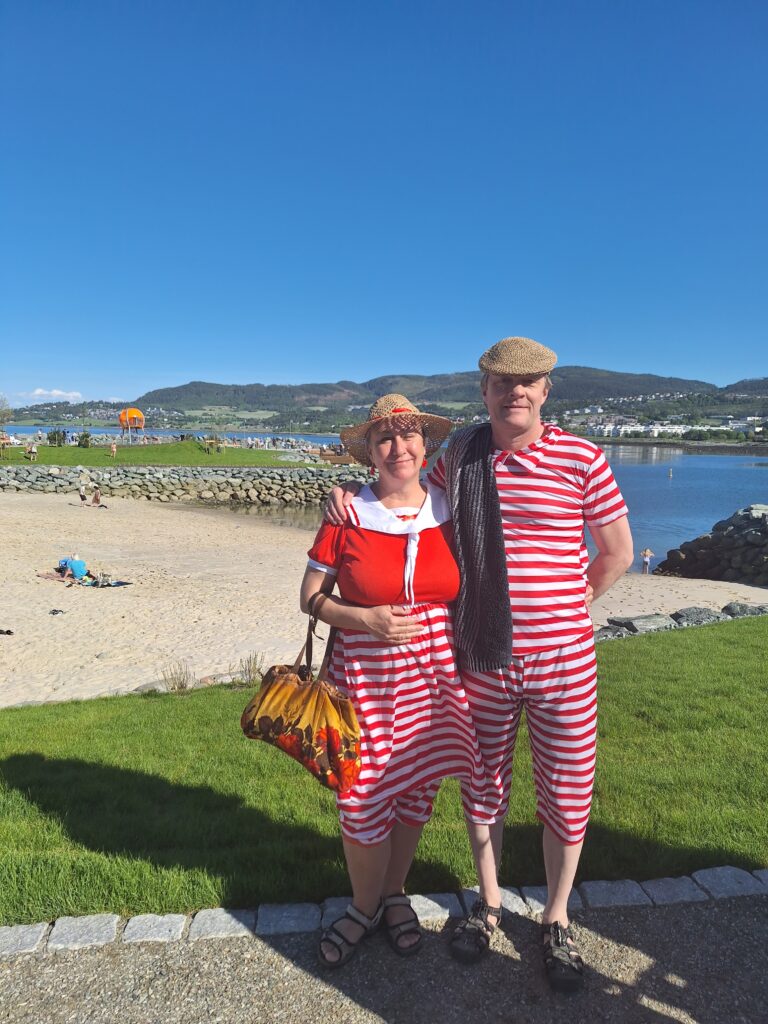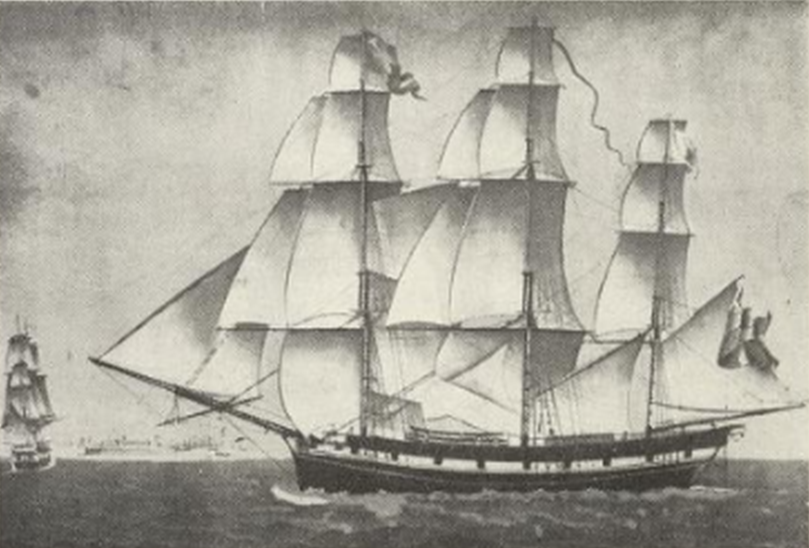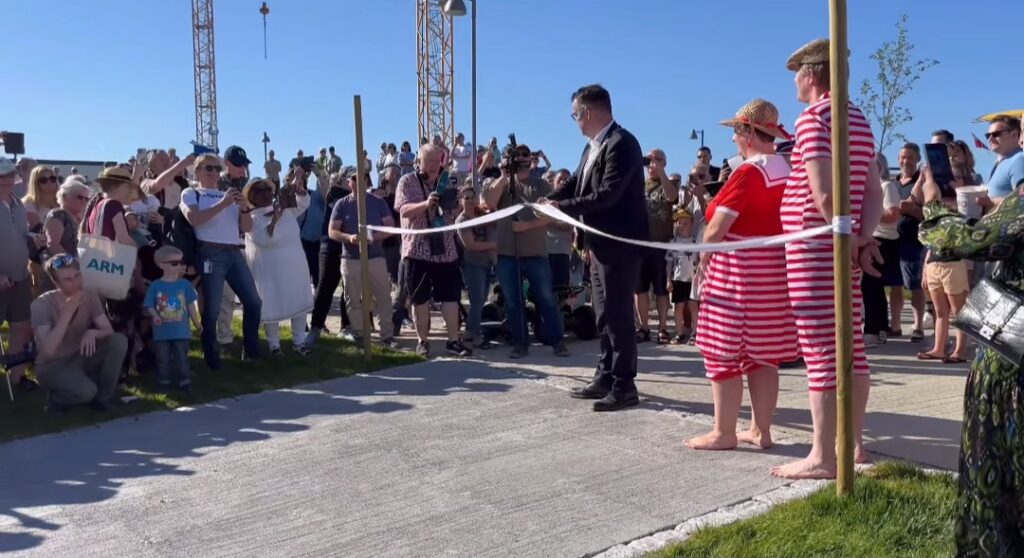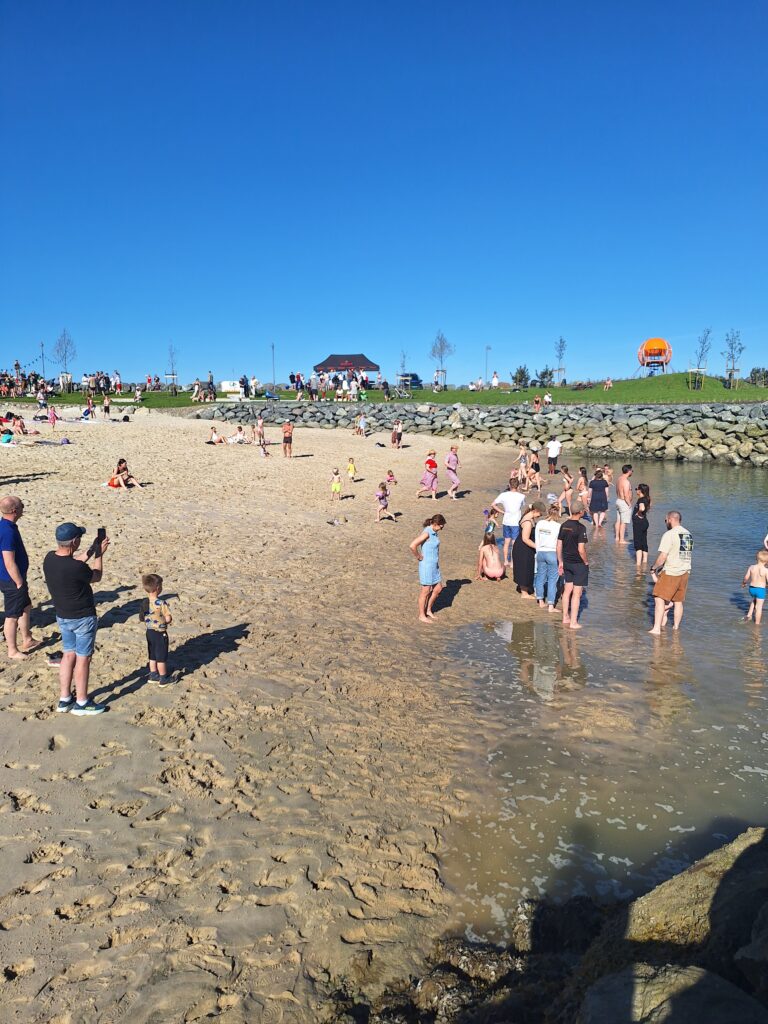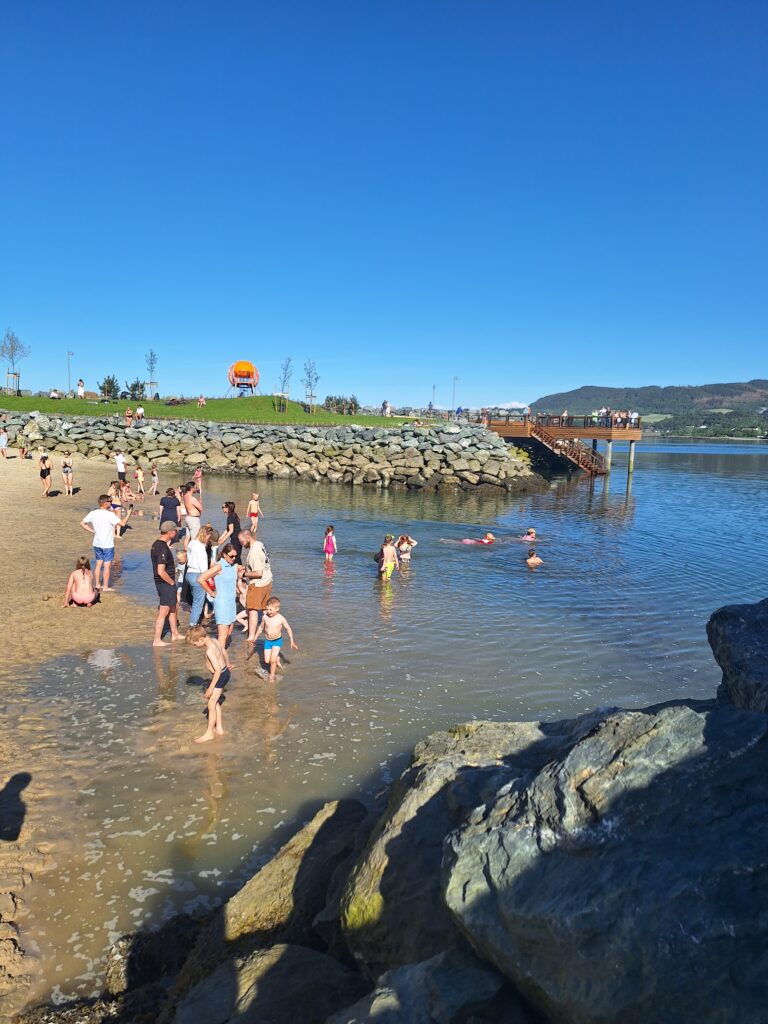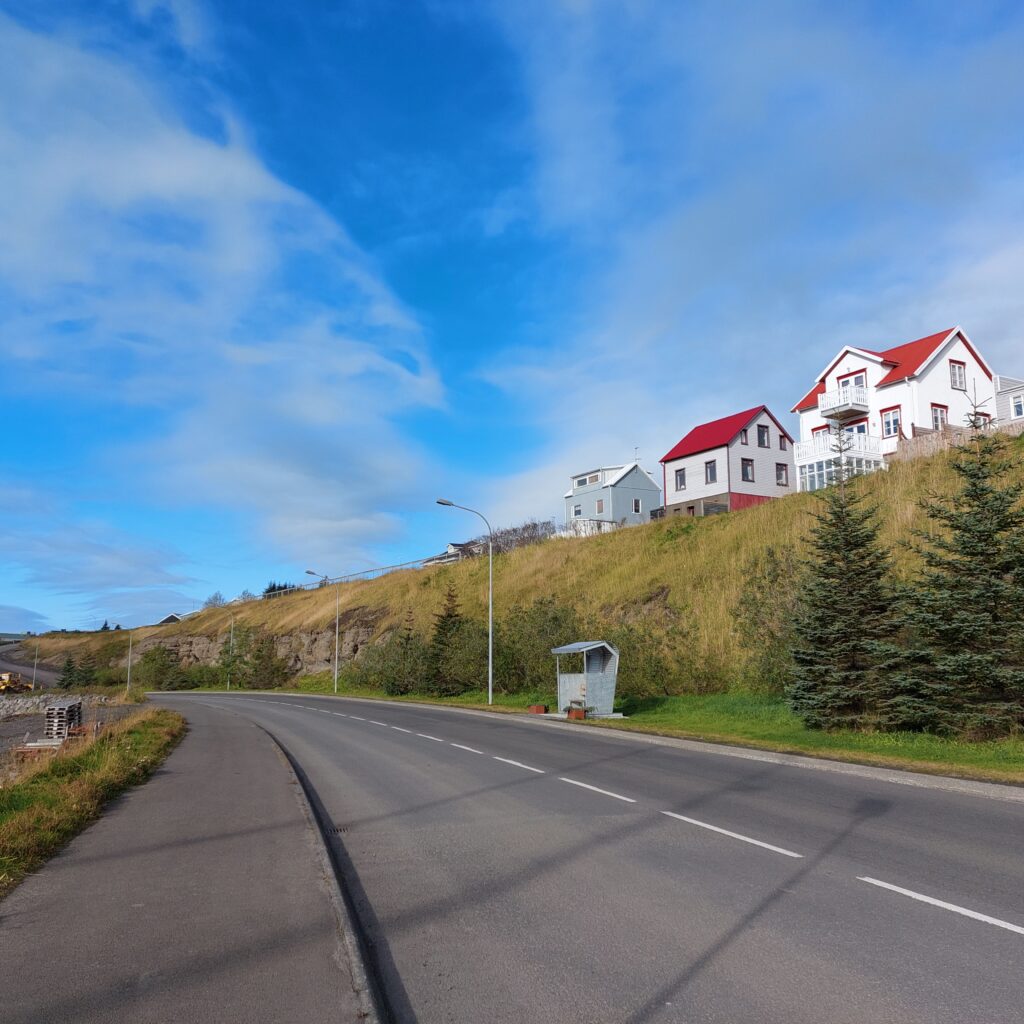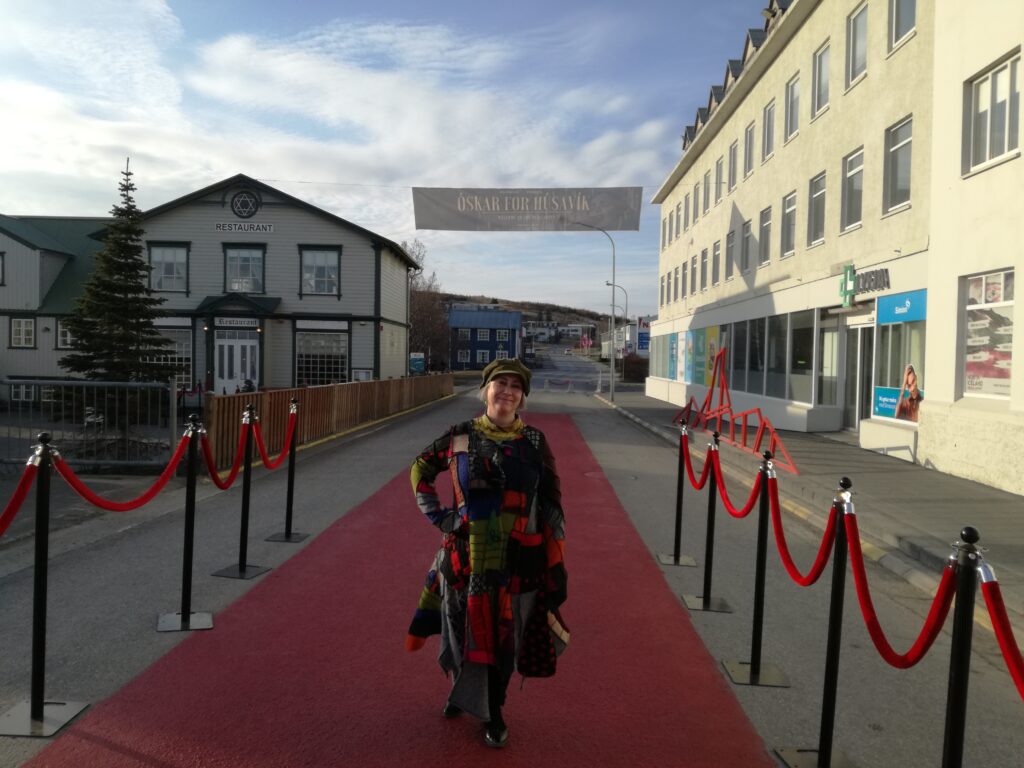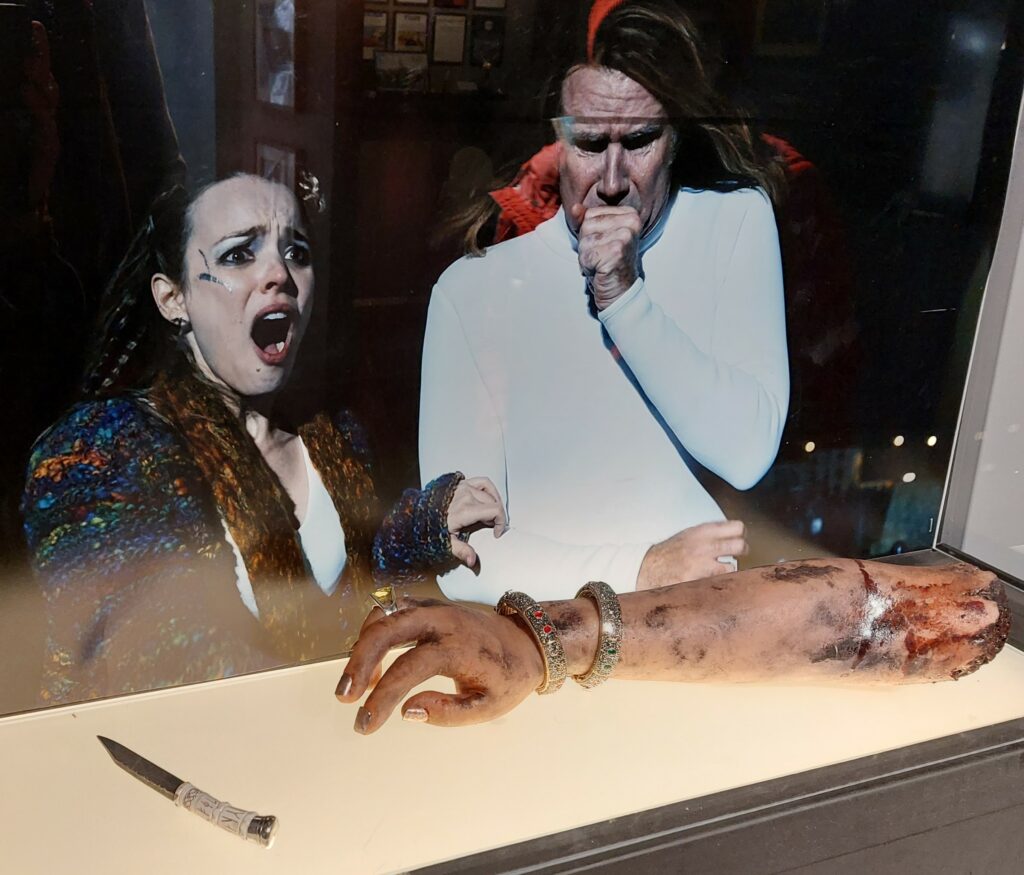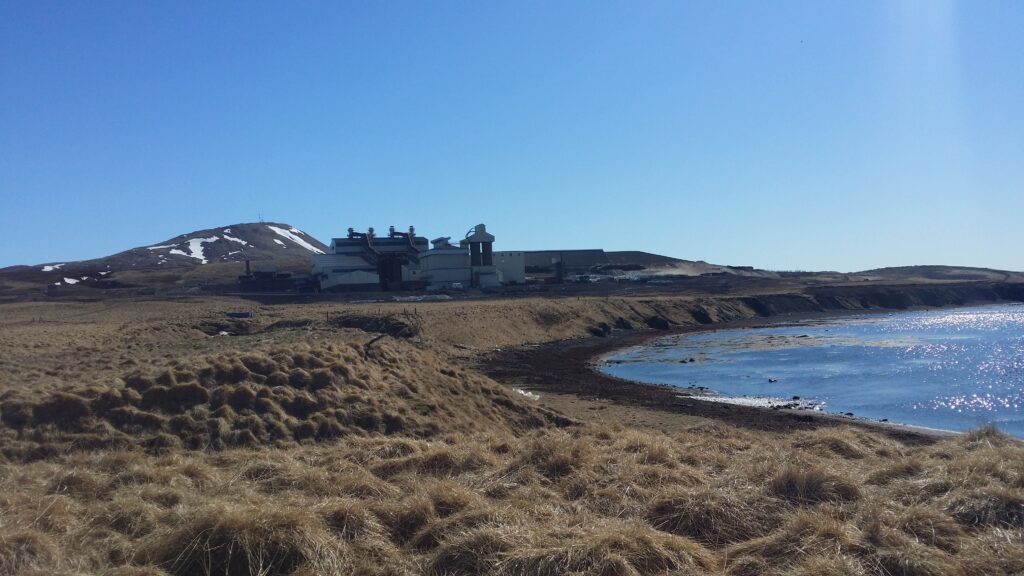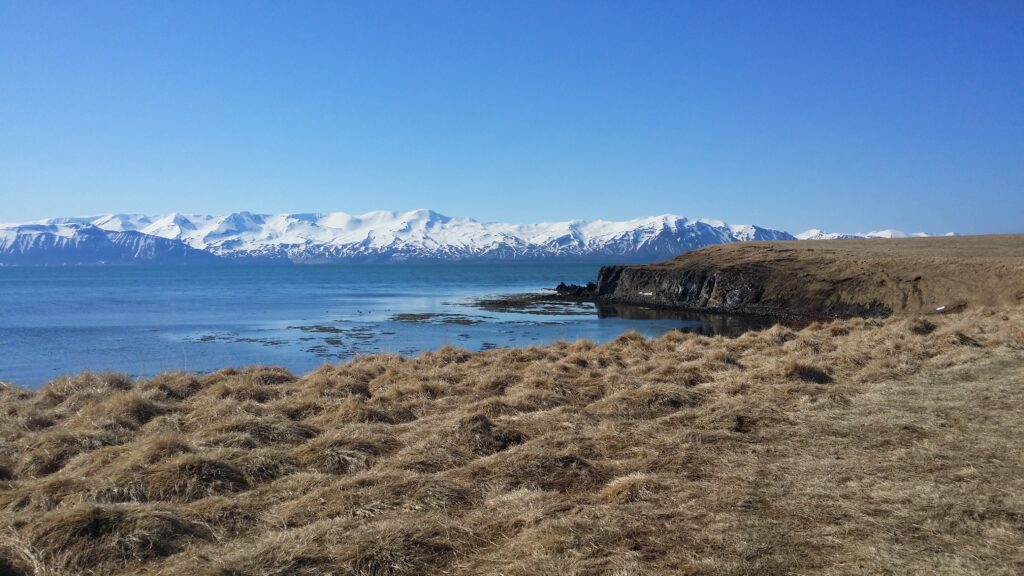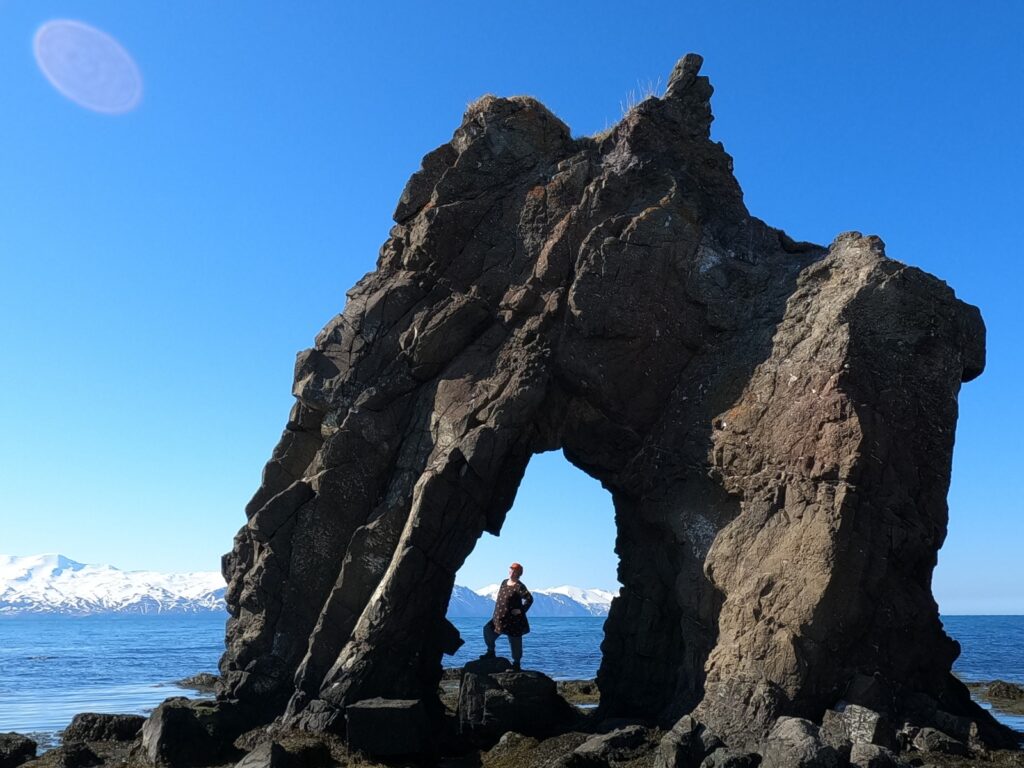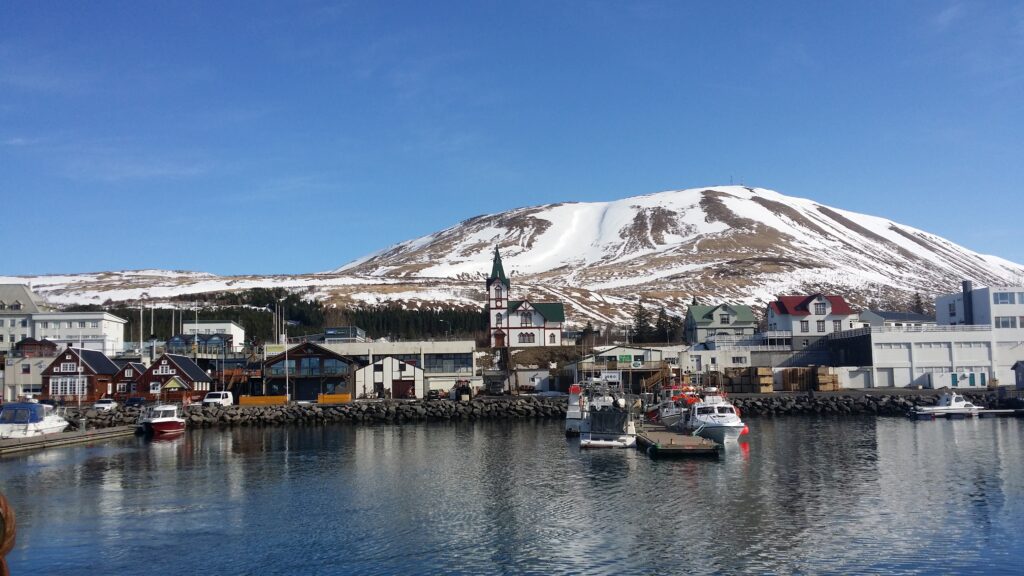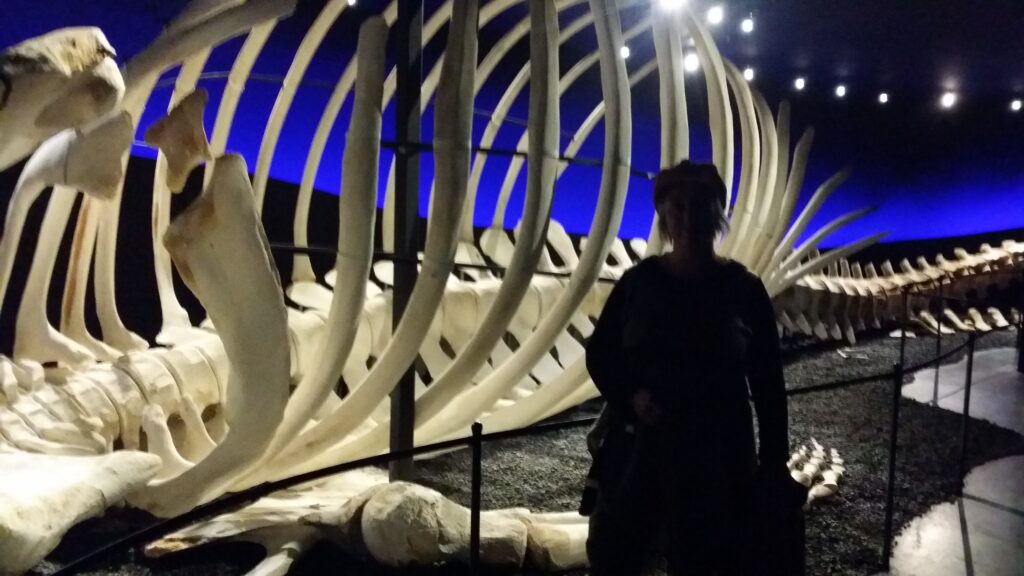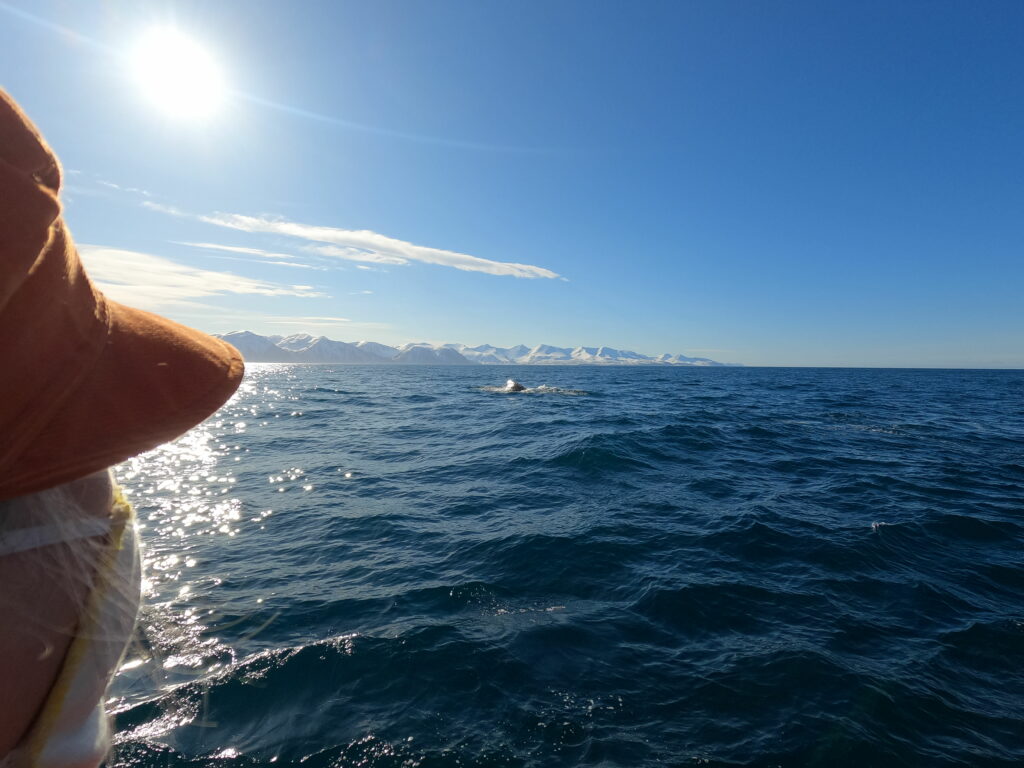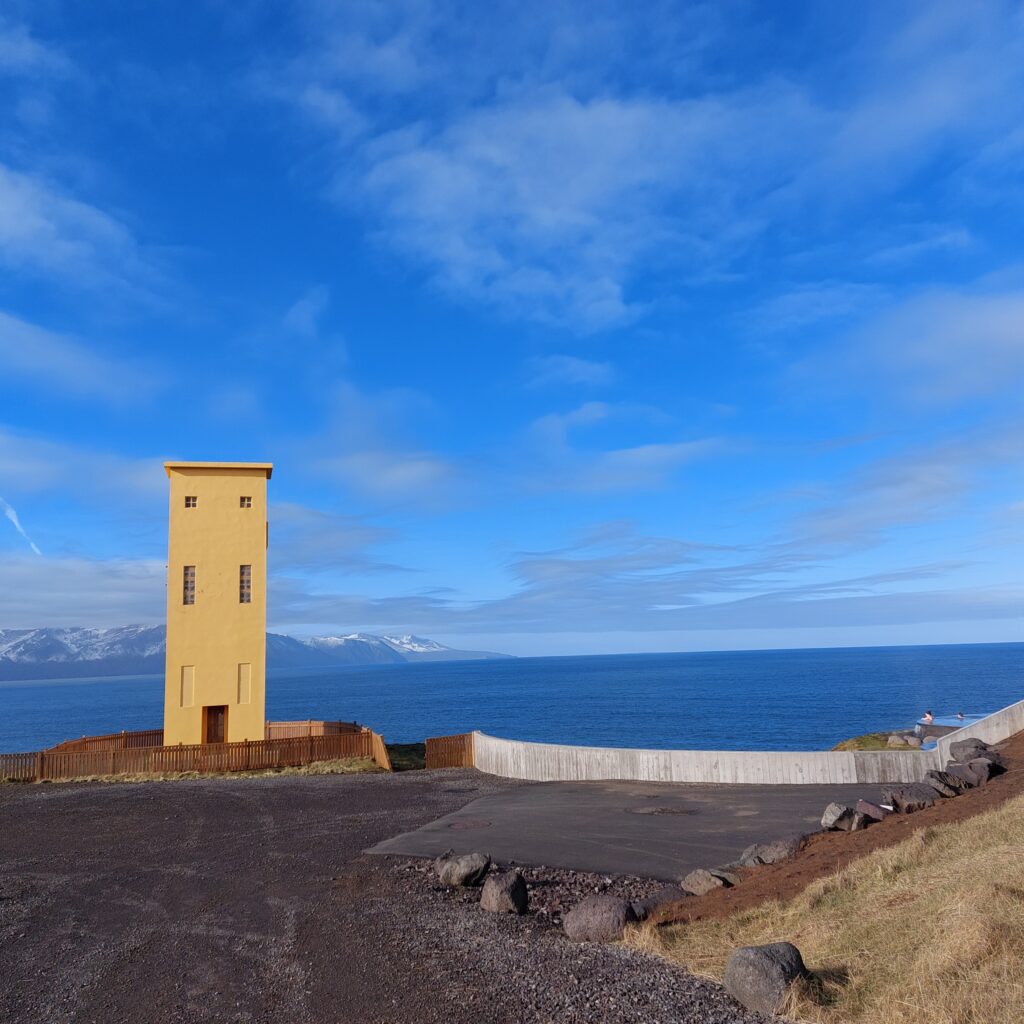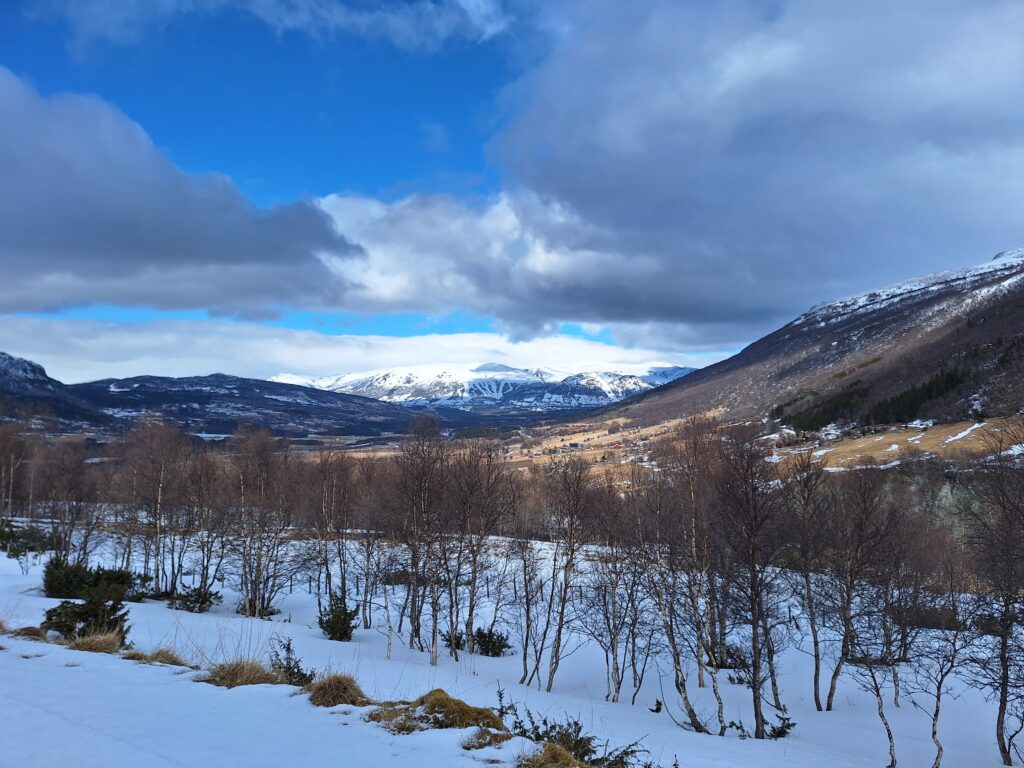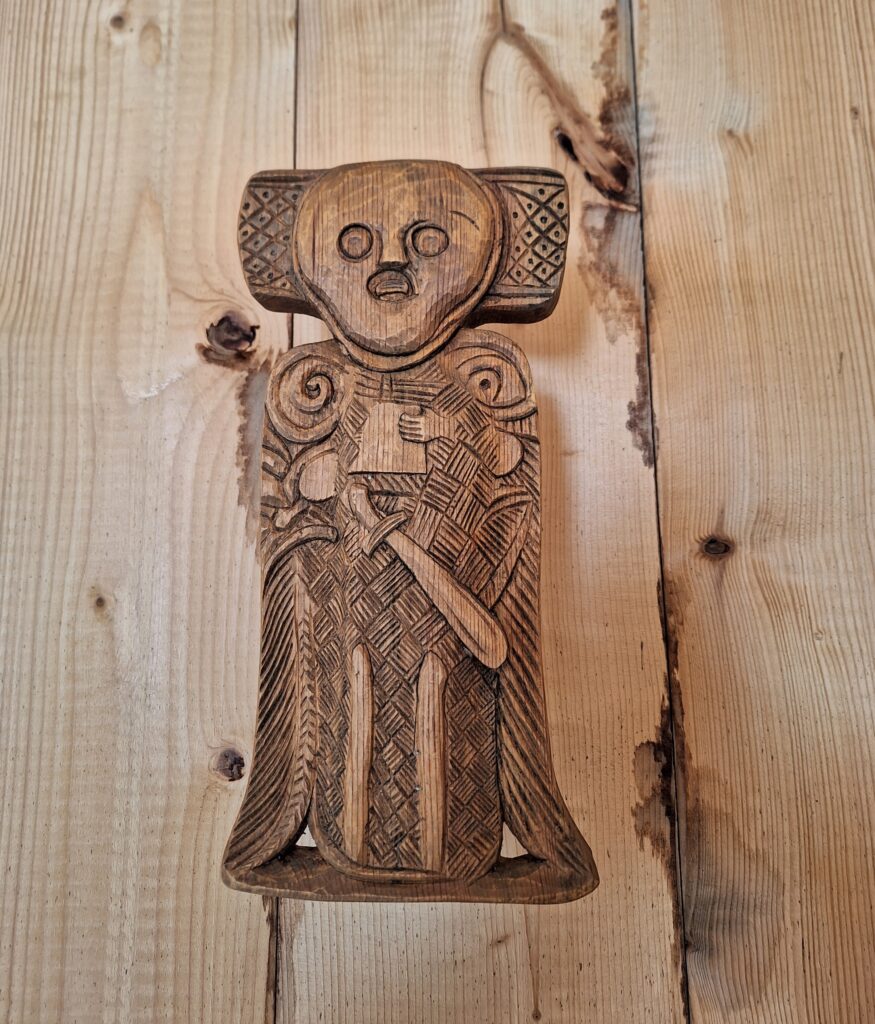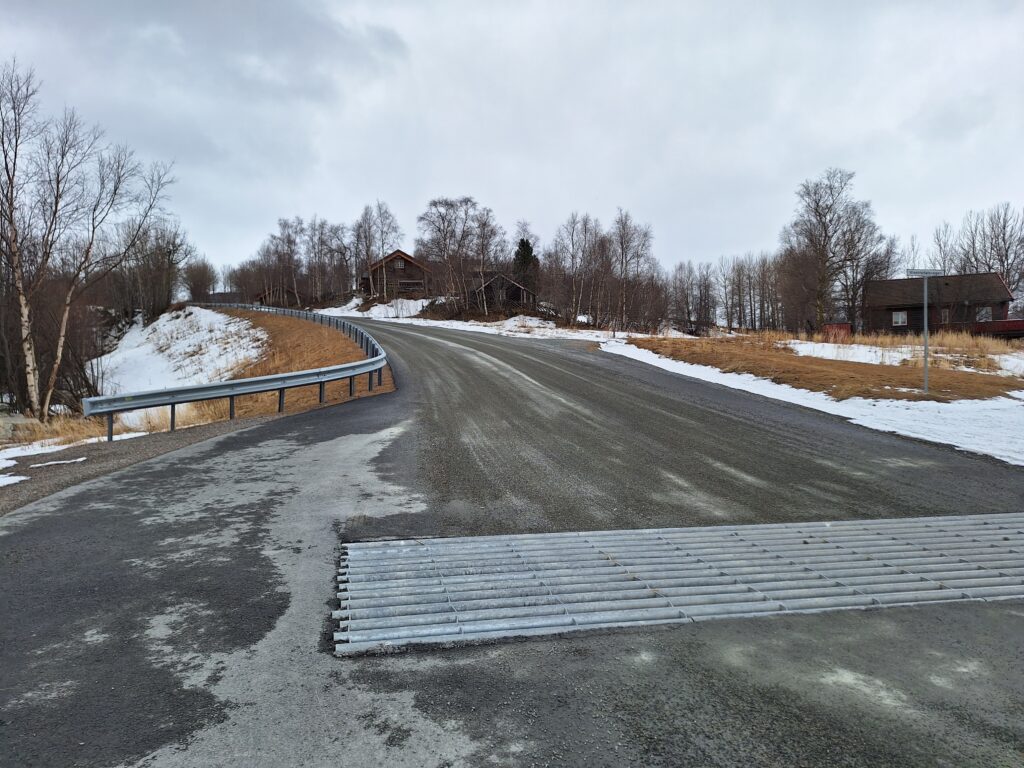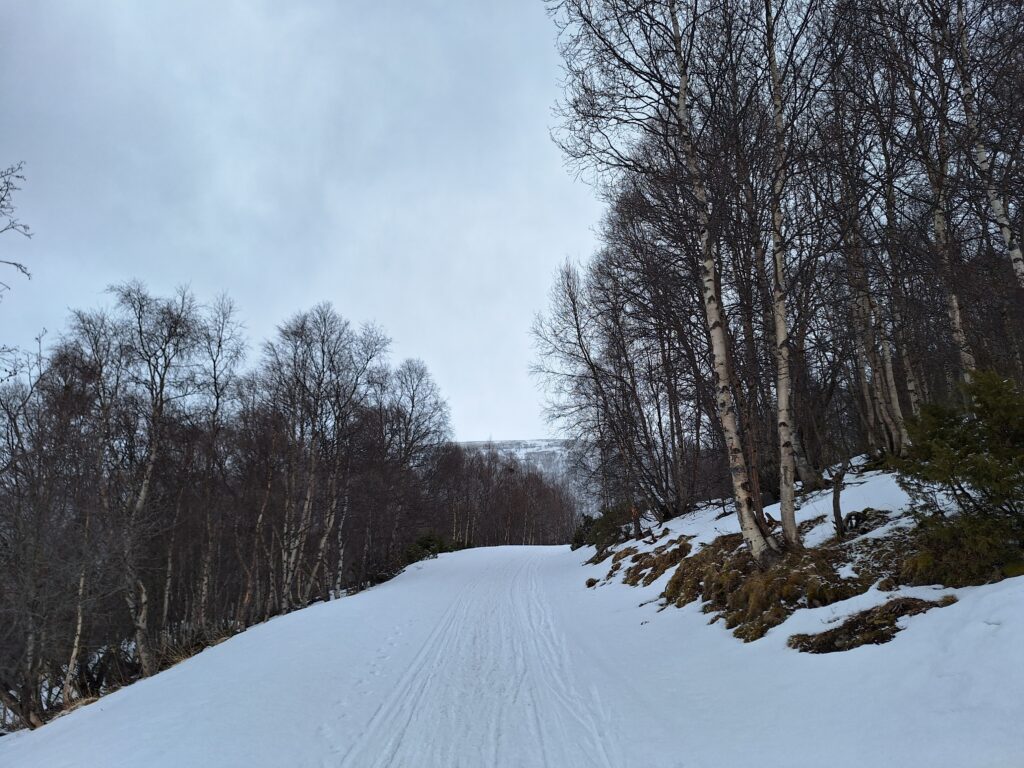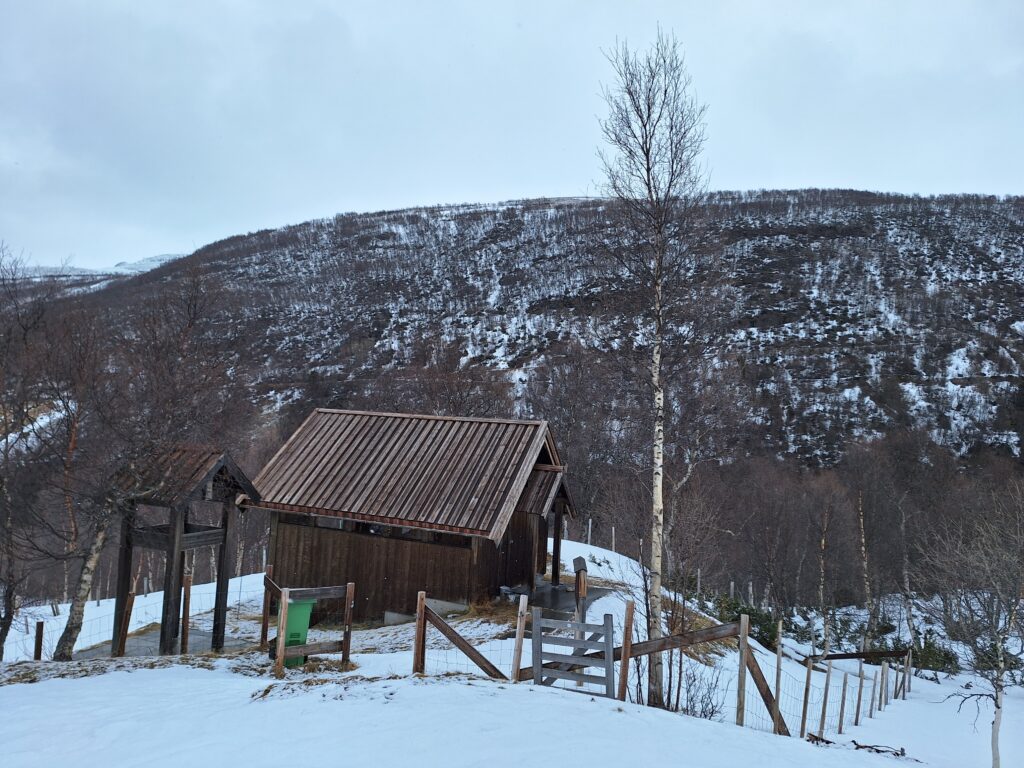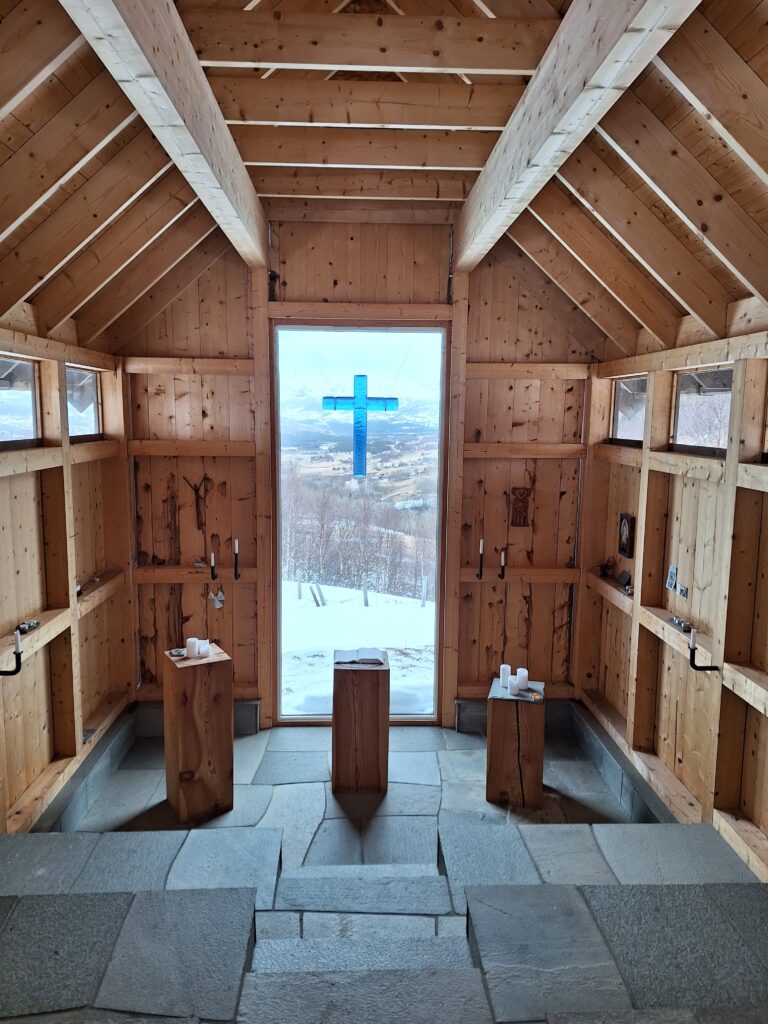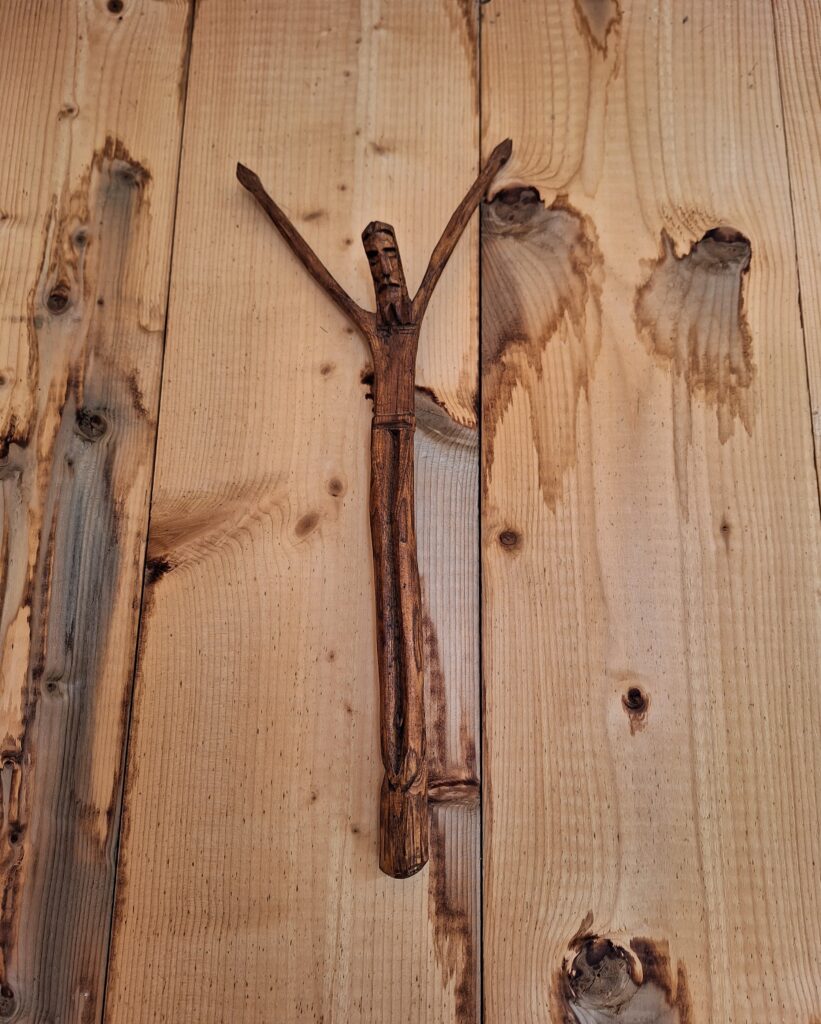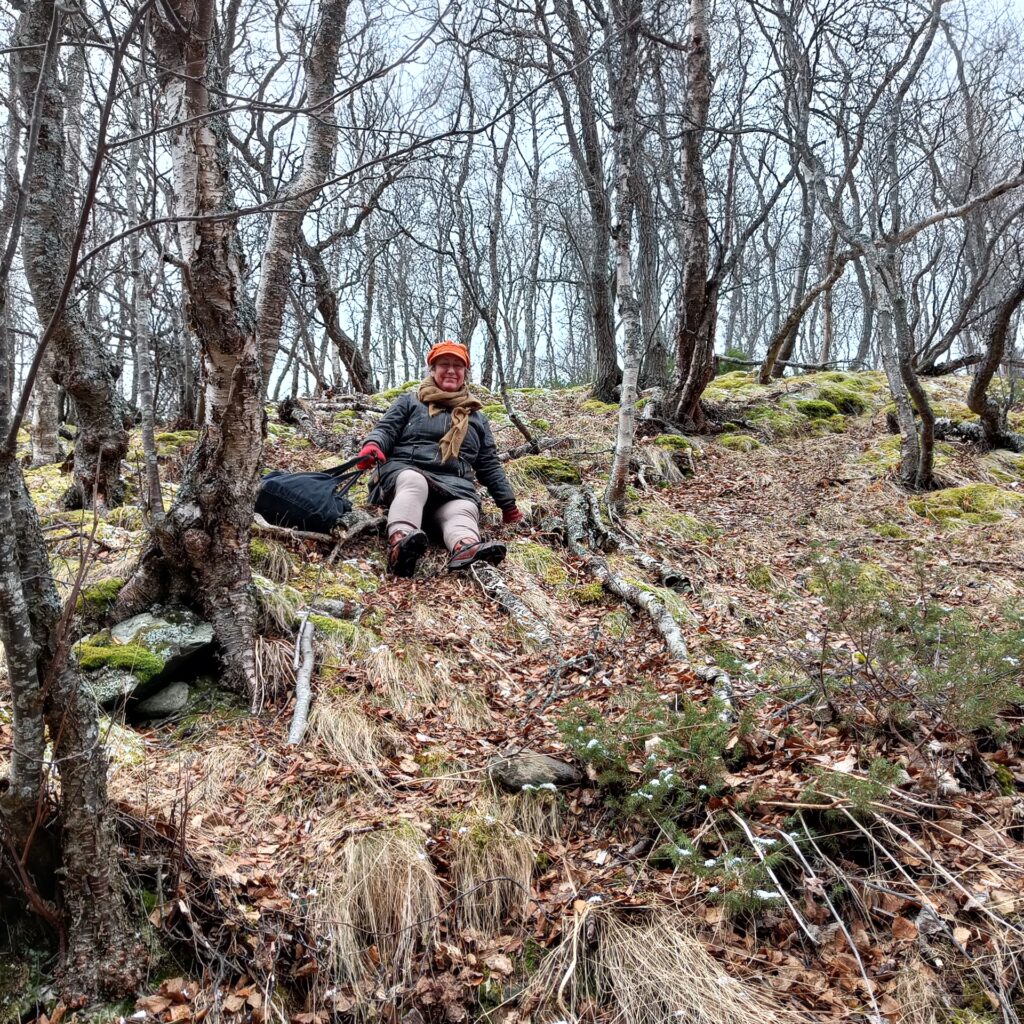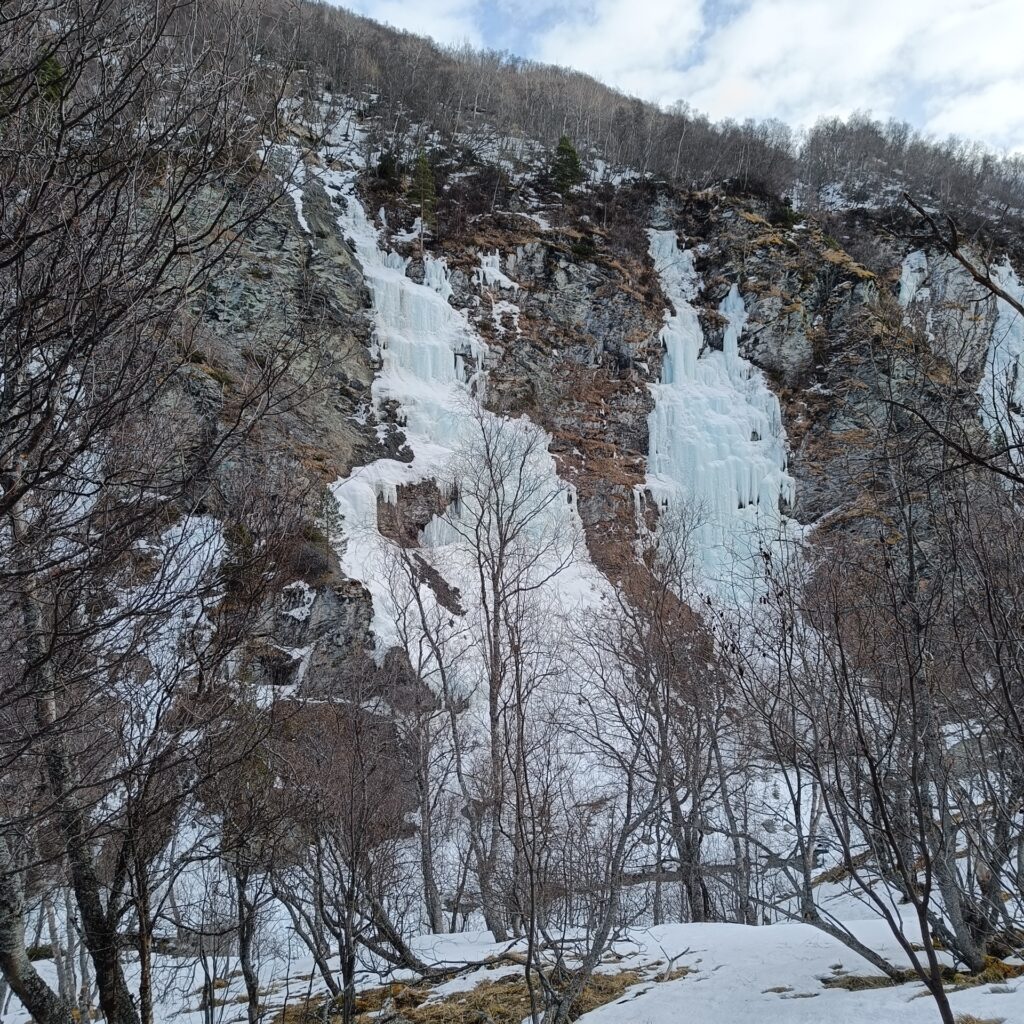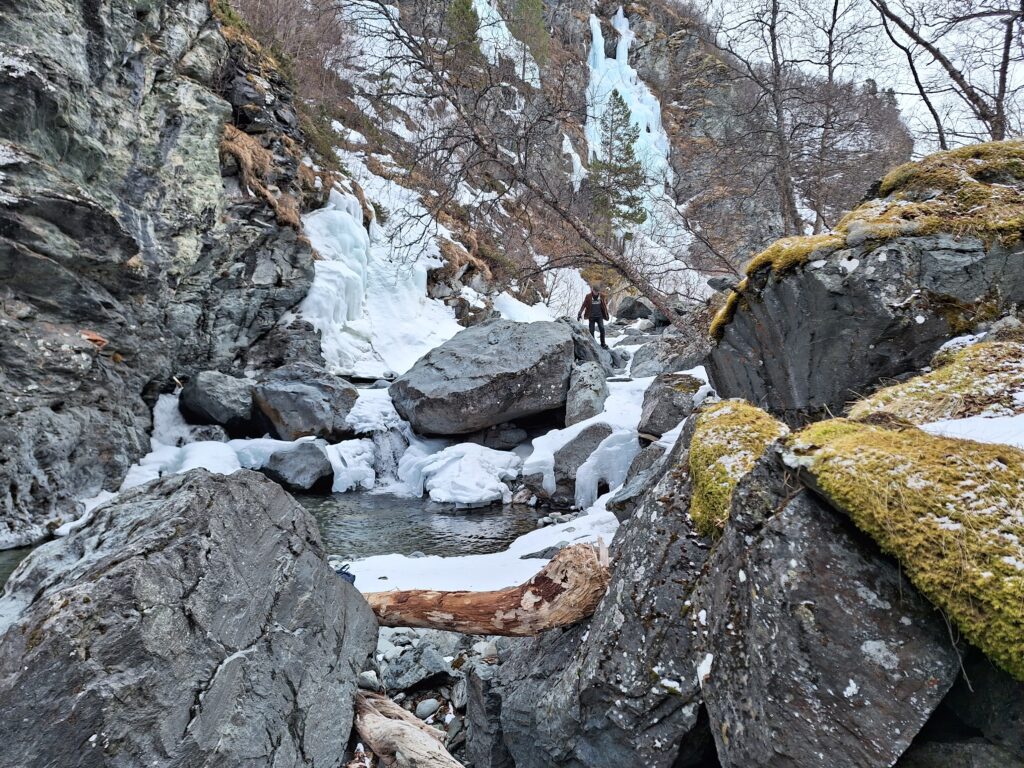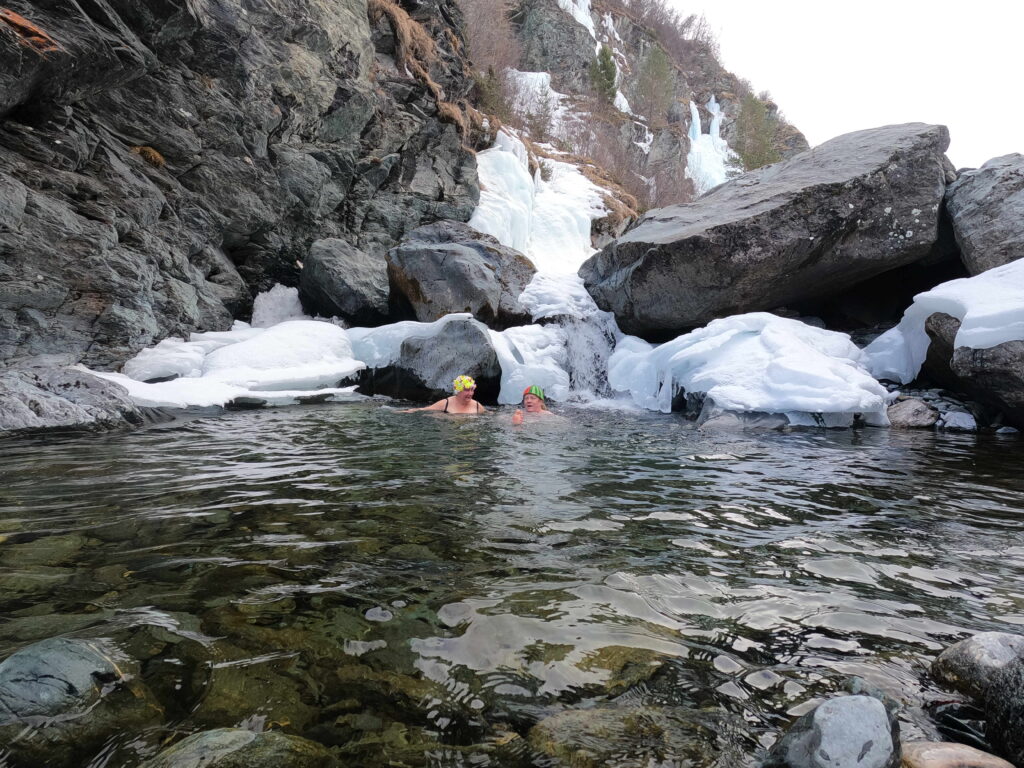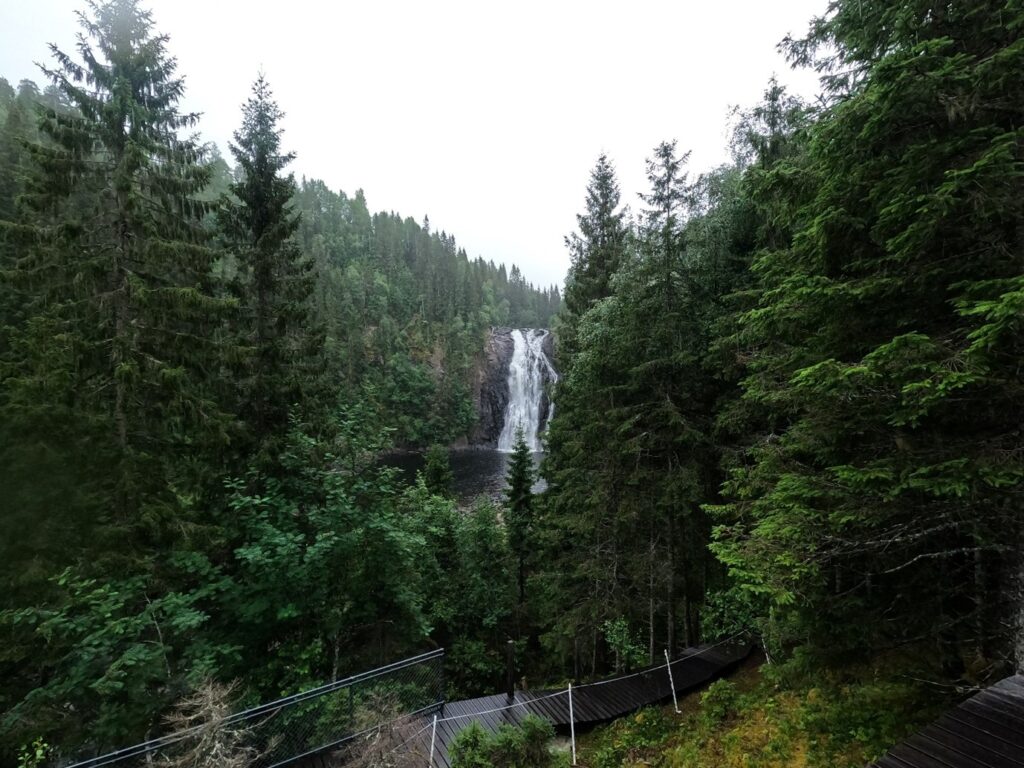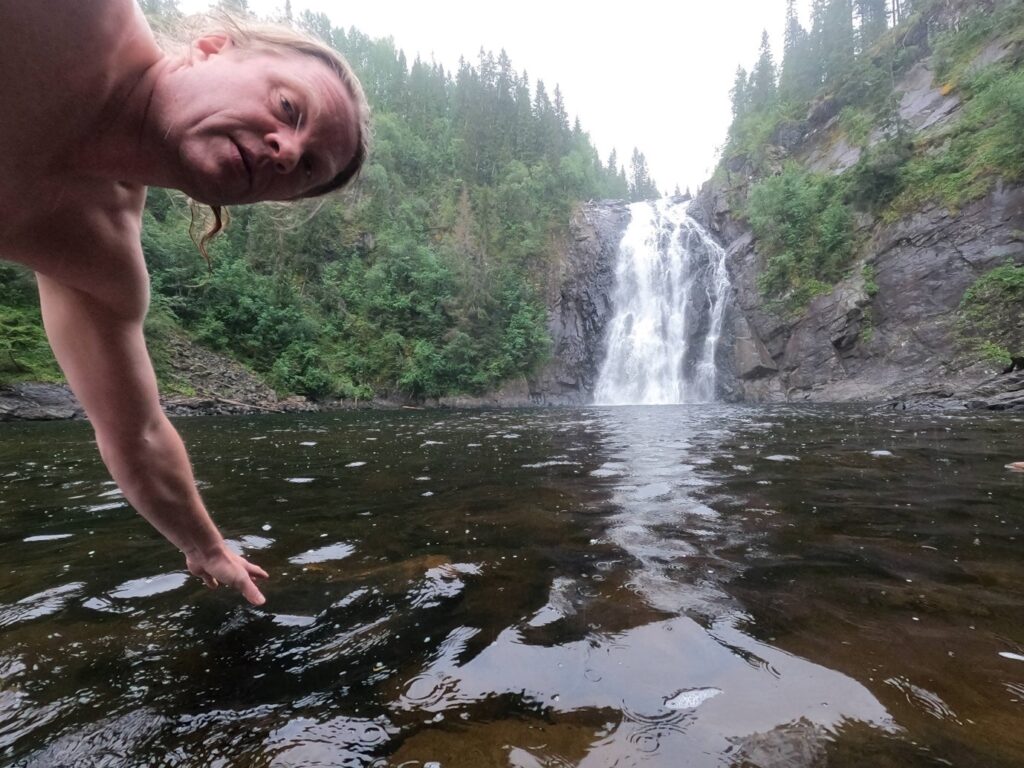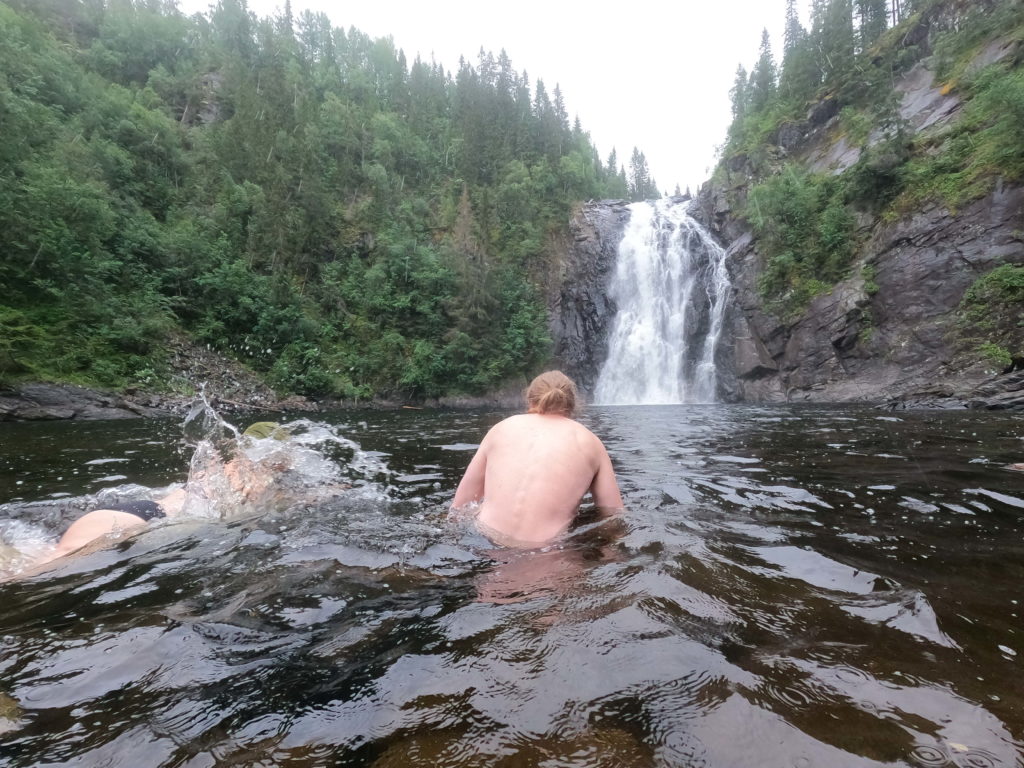
What on earth can bridges be used for on an abandoned track? This is a question most people find no reason to ask. But when a railway bridge crosses your part of a salmon river – then it’s an interesting problem to discuss during the late late hours of the night. The solution for Bertnem bridge over Namsen River was: Place some train wagons on the bridge and use it as a hotel!
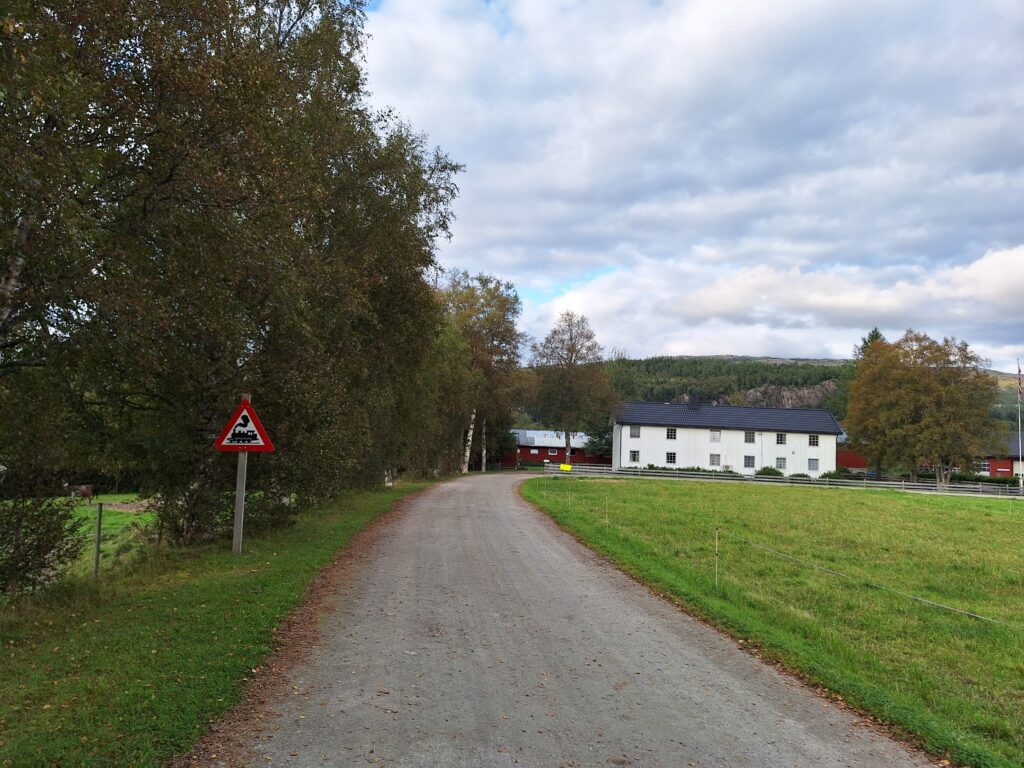
The 52 km long Namsos Railway between Grong and Namsos opened the 1st of November 1934, after a construction period of 12 years. Passenger traffic was shut down in 1978, while freight transport of grain took place until 2005. Today, you can cycle with a dressin on parts of the stretch, both by Namsos town and by Bertnem Bridge in Overhalla municipality.
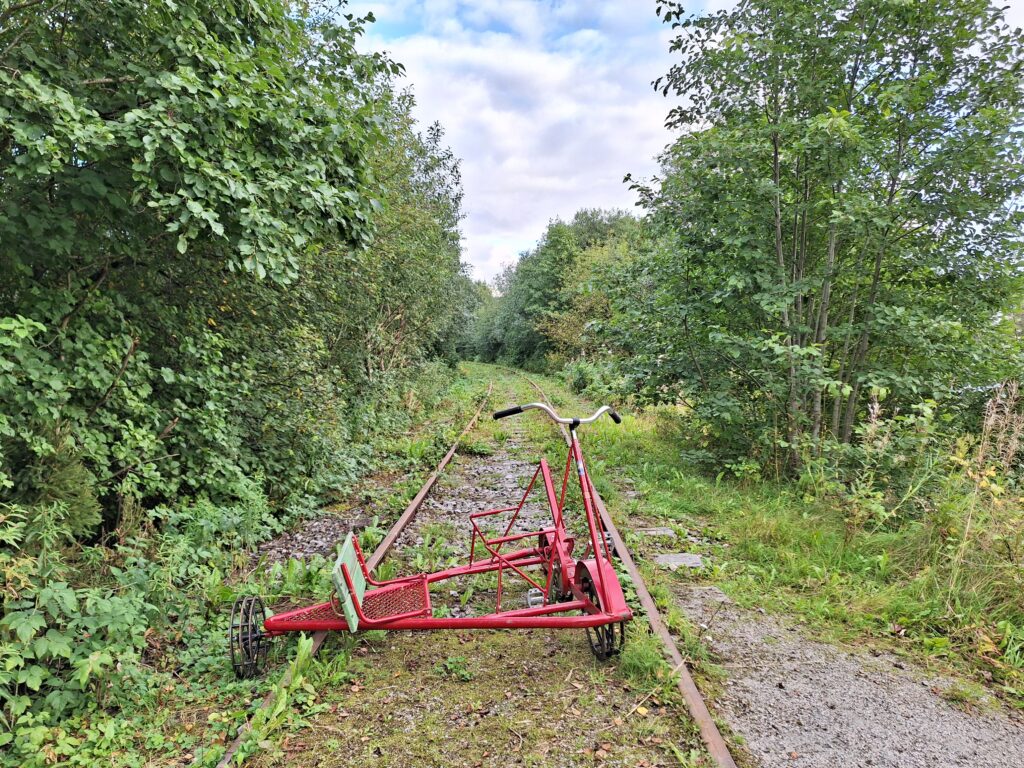
In order to actually be allowed to put four carriages on a railway bridge, a good portion of ‘Trønderly‘ optimism and stubbornness is required. It took Torger Haugen 5 years to get the permit, but the result is well worth the effort. The stunt costs NOK 55,000 per year in bridge rent, but since that includes bridge maintenance it may not be extravagant. And the ‘Namsen Salmon and Train Experience‘, has really become something special!
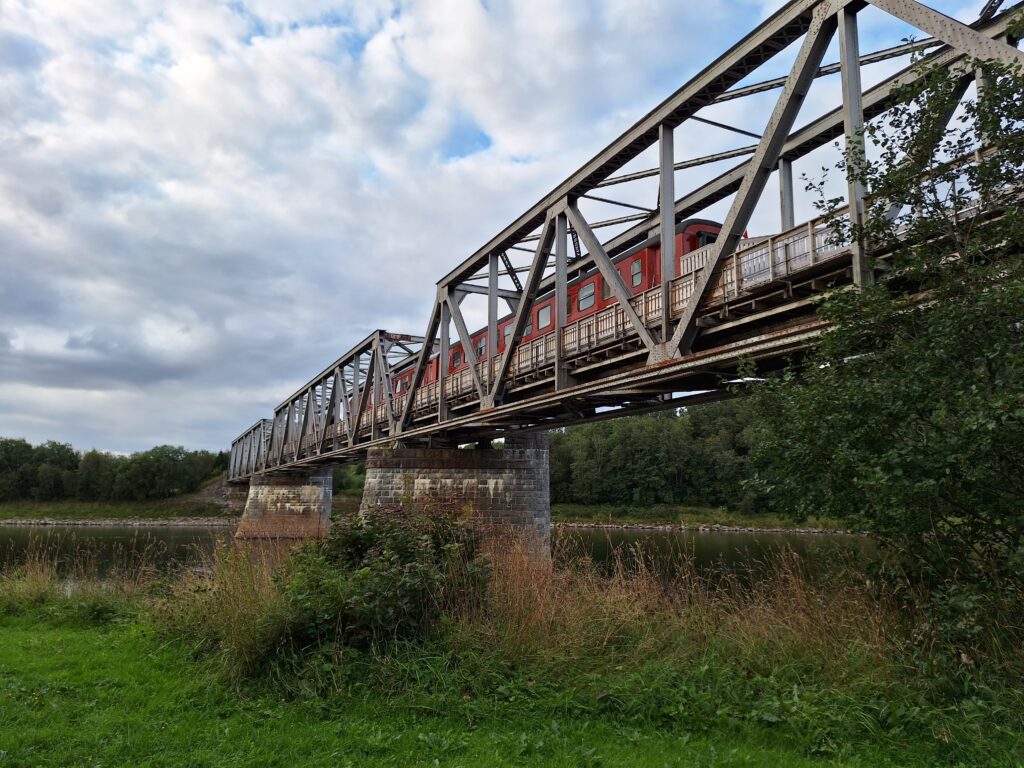
The Bertnem Bridge is barely two hundred meters long and crosses the Namsen – one of Norway’s best salmon rivers. Here you can fish from the railway bridge! Price per kilo of salmon from this salmon adventure is not low, but if you put in a little extra, you can be rowed in the river by your own salmon guide, with an almost guaranteed catch. However, we started our ‘Salmon Experience‘ the day after the end of the 2023 salmon season, and our salmon experience therefore consisted of dinner made from wild salmon, which was both tasty and enjoyable.
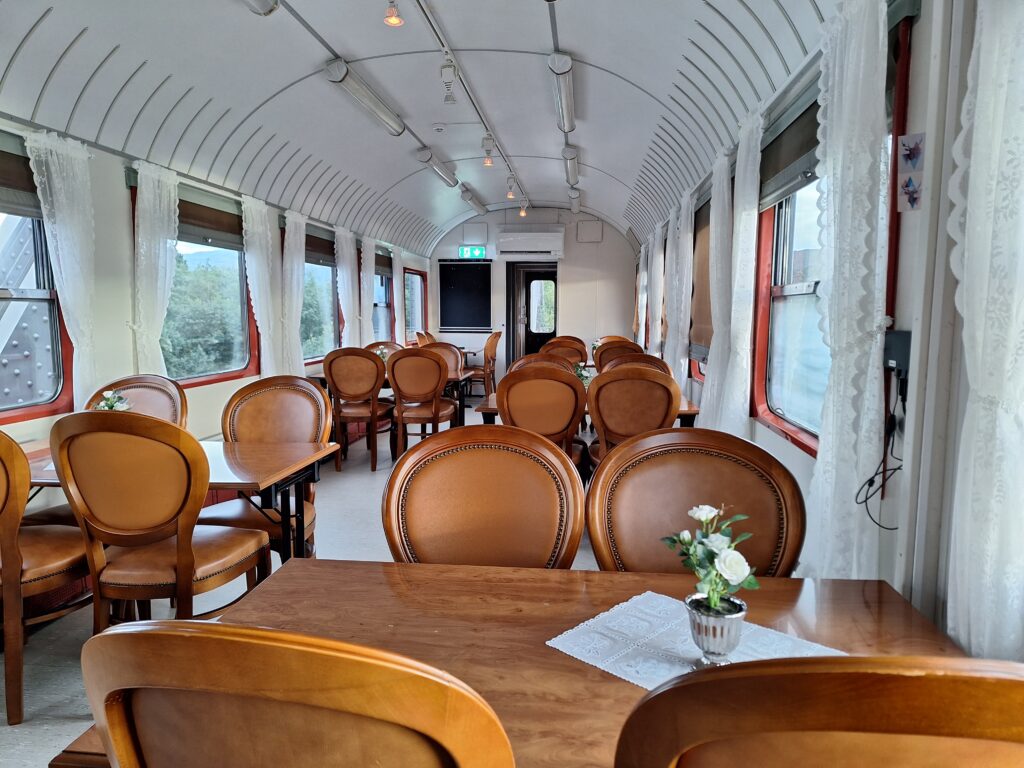
Among the 6 guests this evening were representatives from the former rock band Prudence, the Pe-Torsa revue and of course Tobatheornottobathe’s own band. Culture was therefore very much in place at the train, and the evening turned out both long and pleasant.
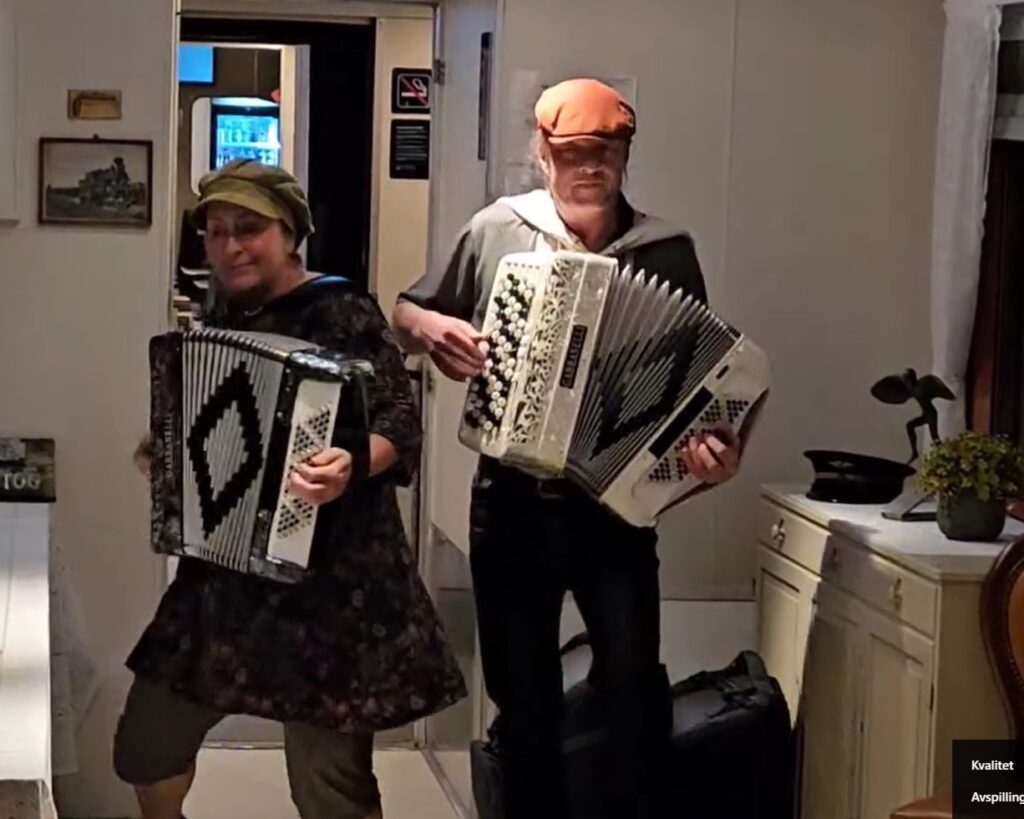
Parts of the performance can be seen here: https://www.facebook.com/share/v/zyaWbJF9Eo9qJqag
Before eating wild salmon above Namsen, a bath in Namsen is highly recommended. Below the Bertnem Bridge you will find easy access to the river. The water is clear and nice (and drinkable, according to the host – if wanted). A pleasant bath, not at all cold this first day of September. But be aware that there is a camera on the train sending a livestream of this bathing area!
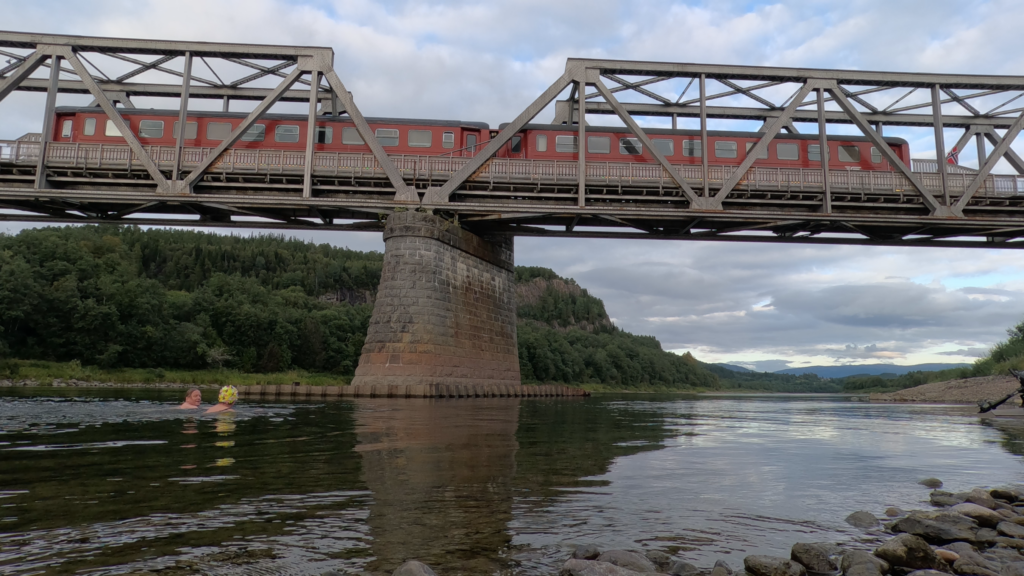
After the bath you can relax in or between the train carriages, where nice outdoor areas have been created on the railway bridge.
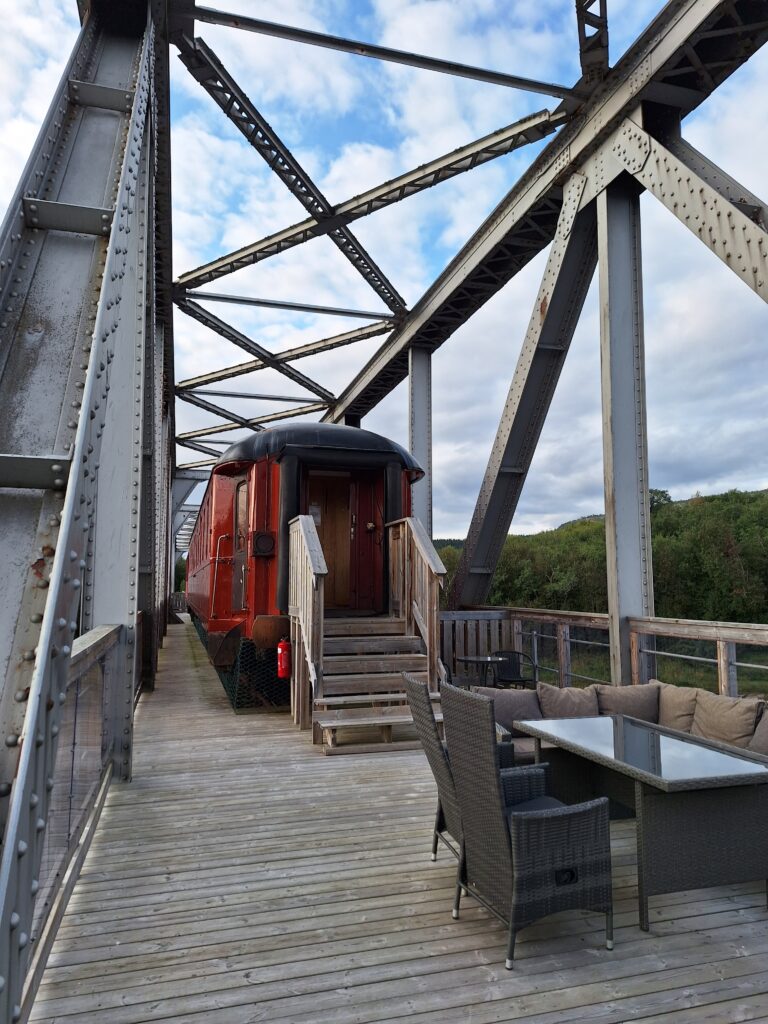
And if it gets too boring as the train is standing still, a QR code resulting in train sound is displayed outside the sleeping compartments. That was very confusing indeed! Sitting there, on folding seats from the 60’s, with train sounds from your mobile, while you enjoyed the view of Namsen, the brain didn’t like the fact that the sound indicated that the train was moving forward (as it usually does), while the eyes saw that the movement was going across. Of course, Namsen River runs perpendicular to, and not along the bridge.
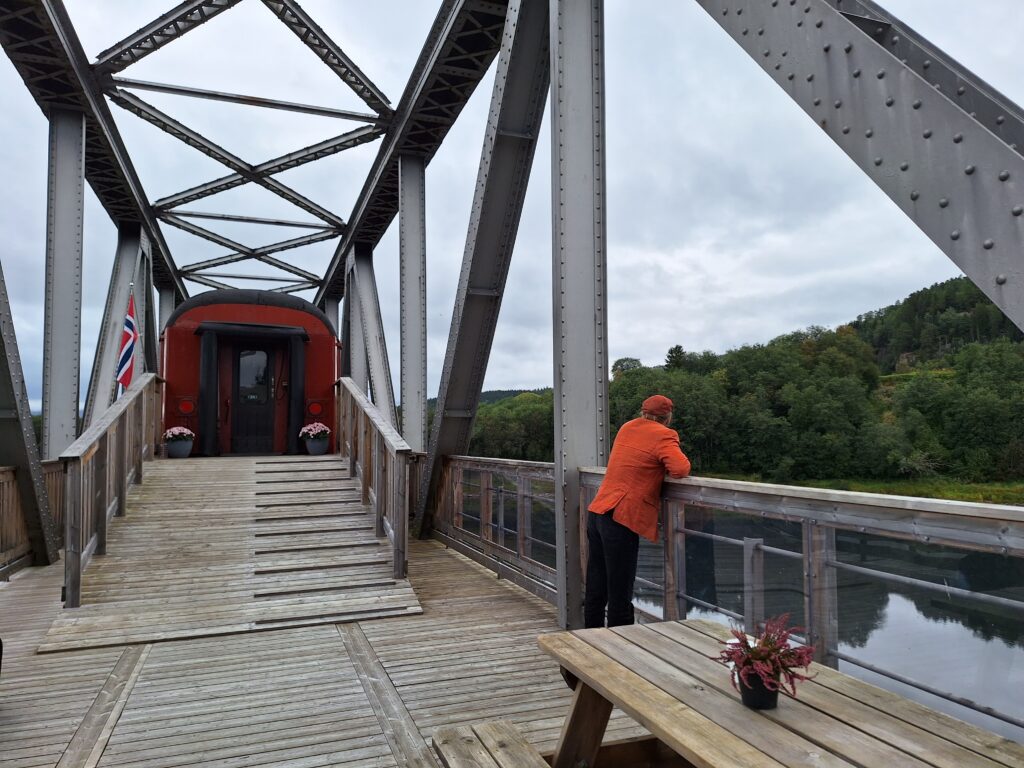
A bath-train-salmon adventure at Namsen can be both fun and strange.
P.S.: For the season 2024 all salmon fishing is prohibited. We really hope that’s not the end of this train adventure!

